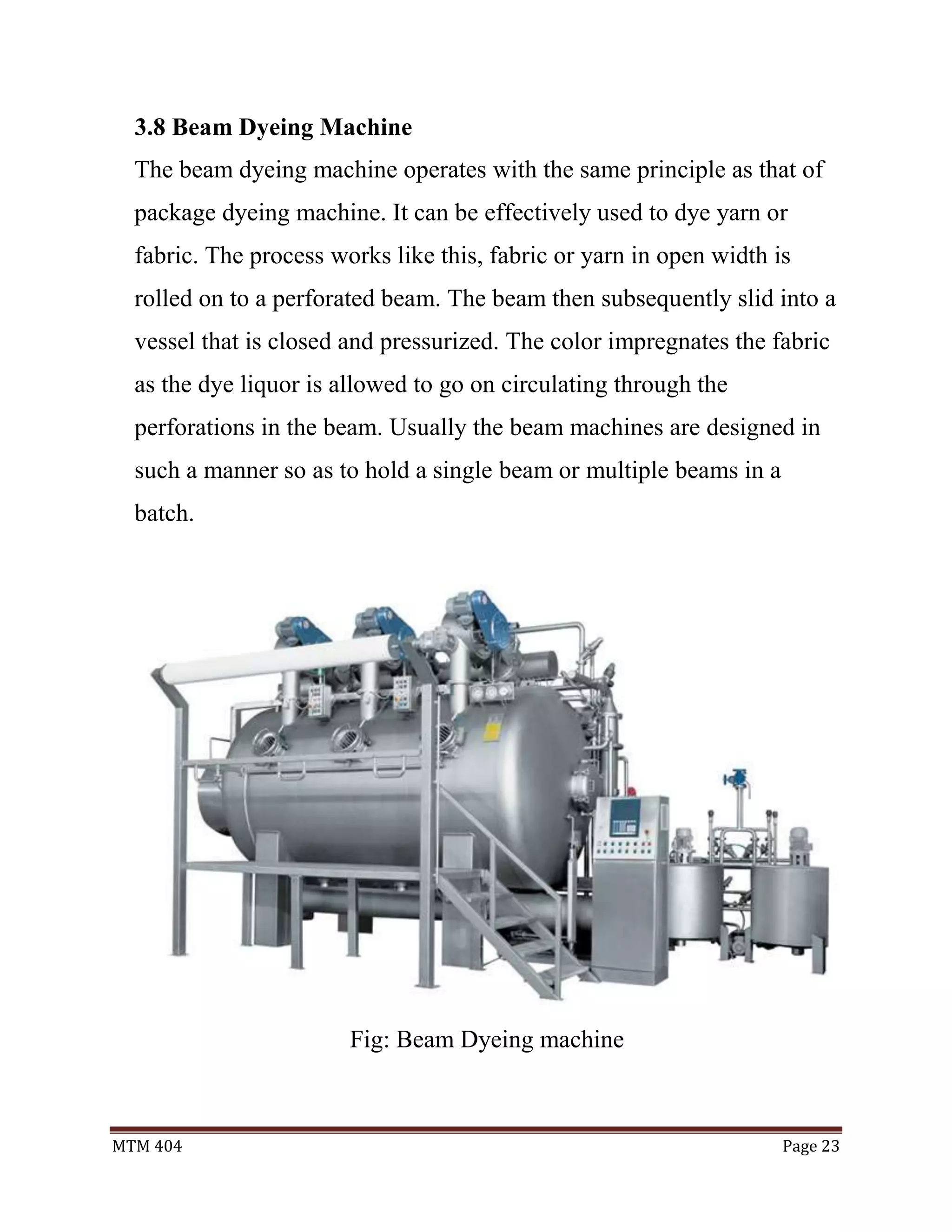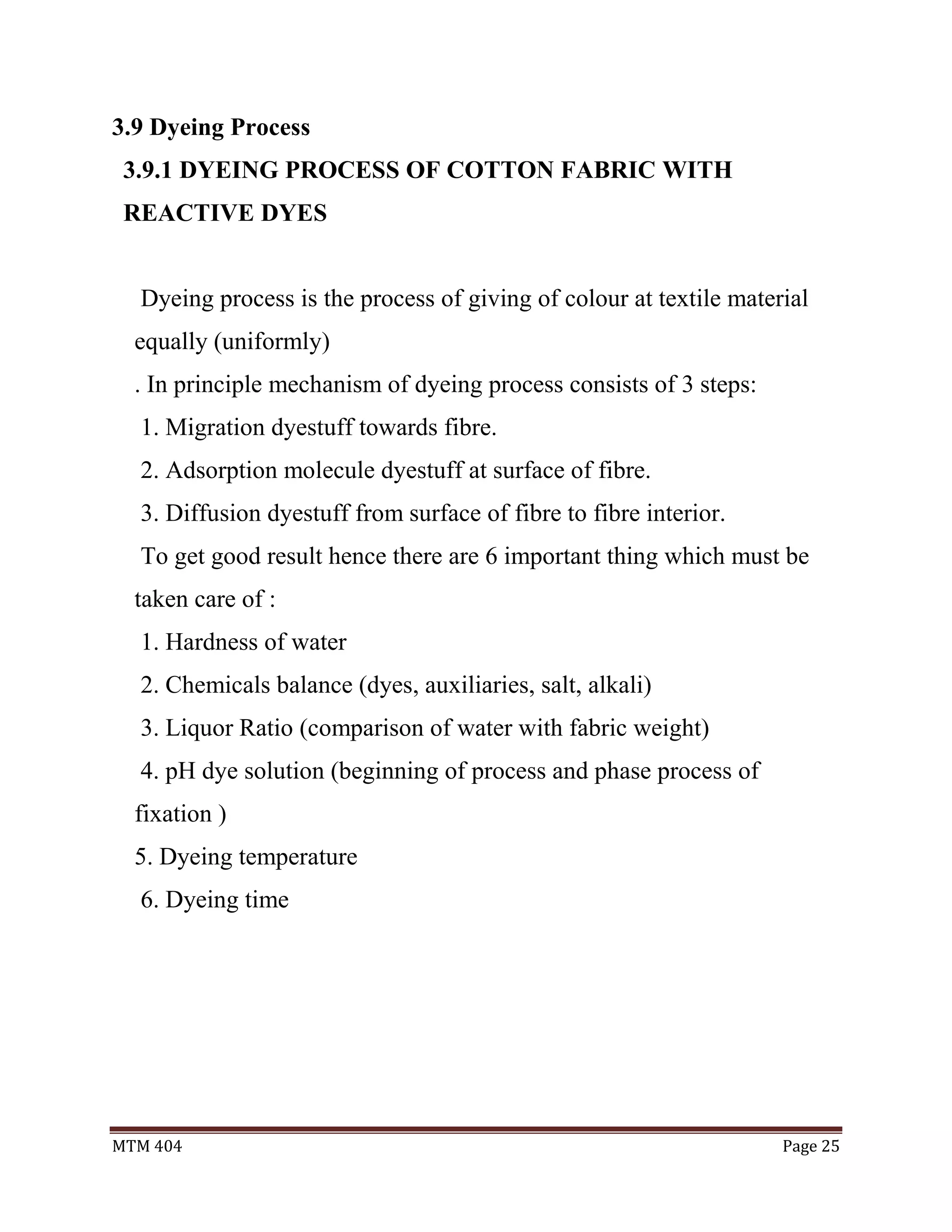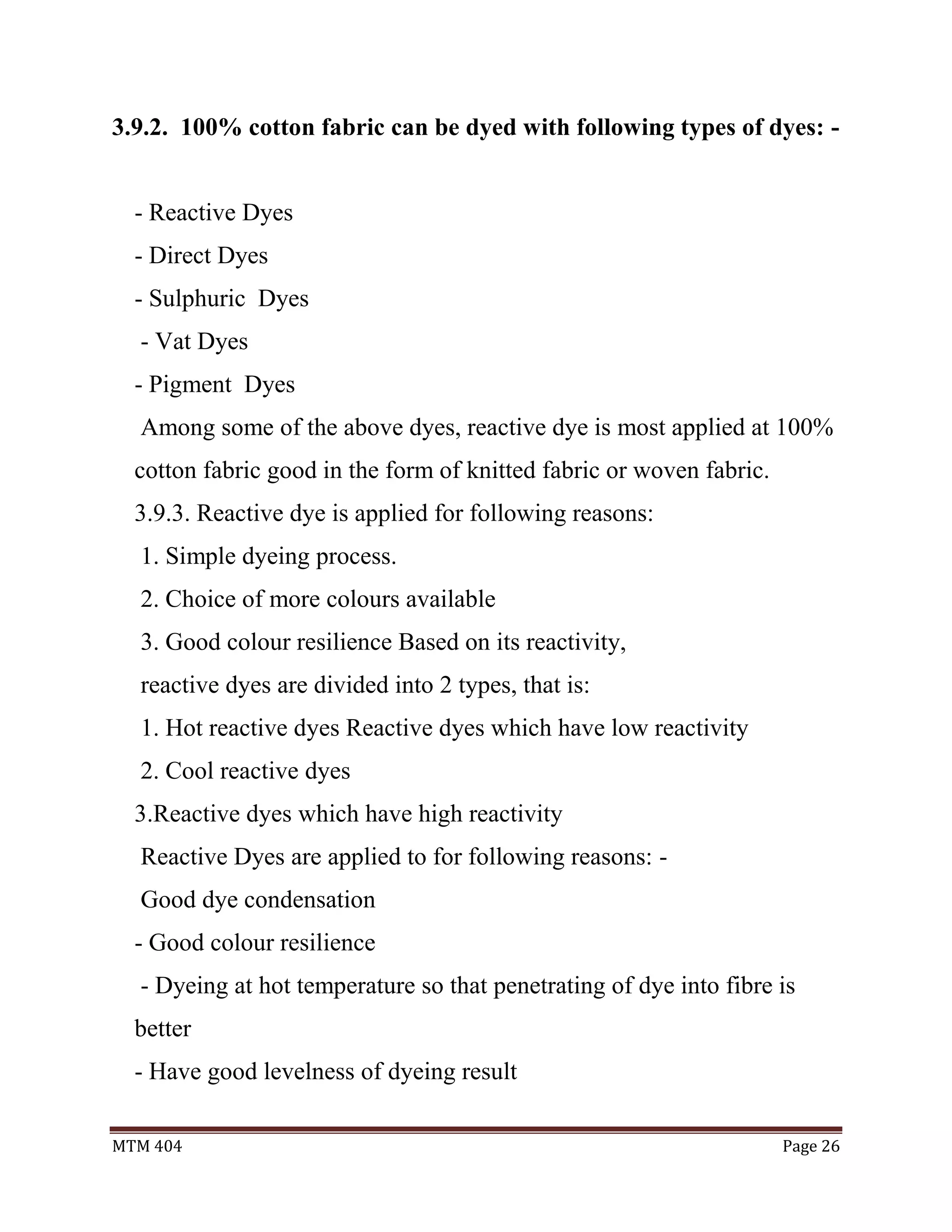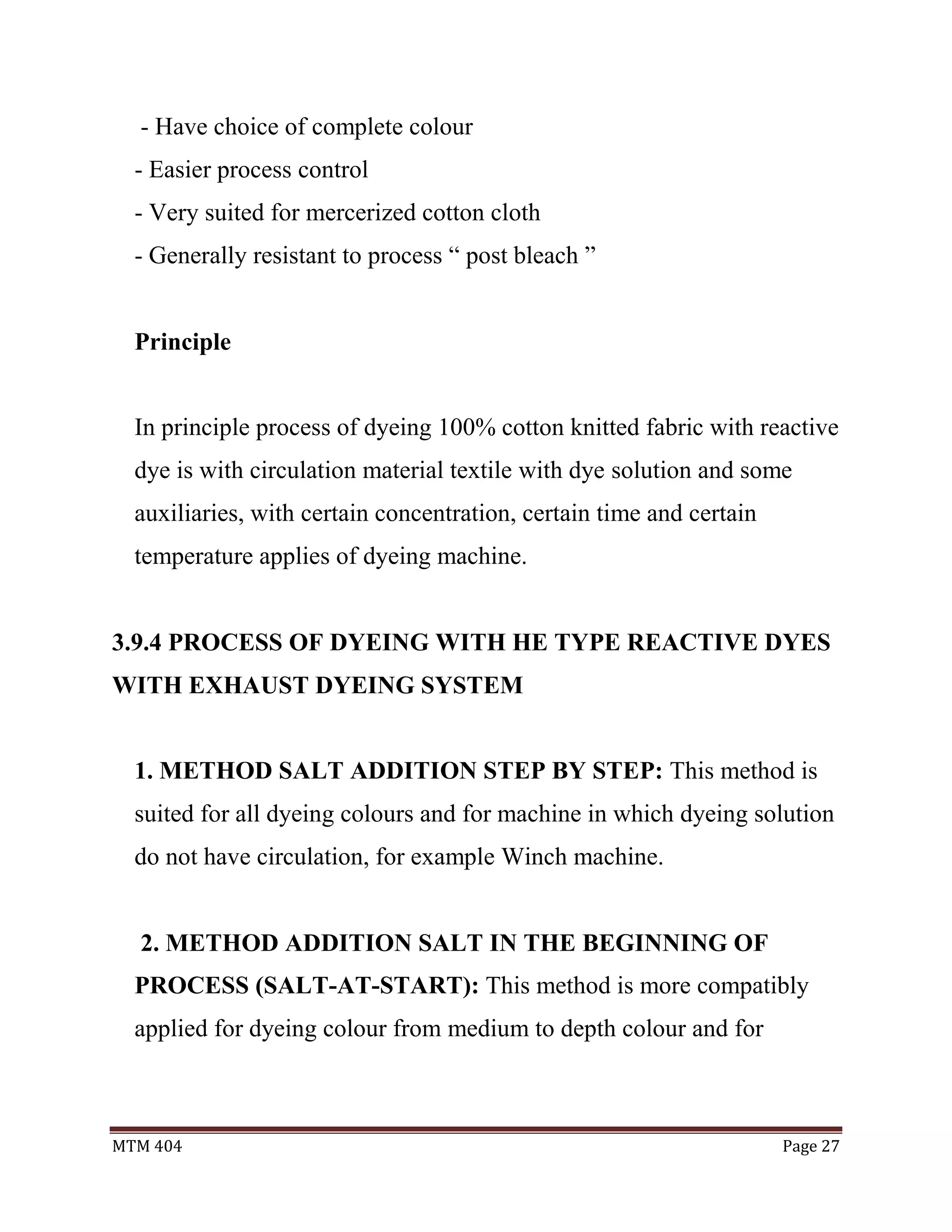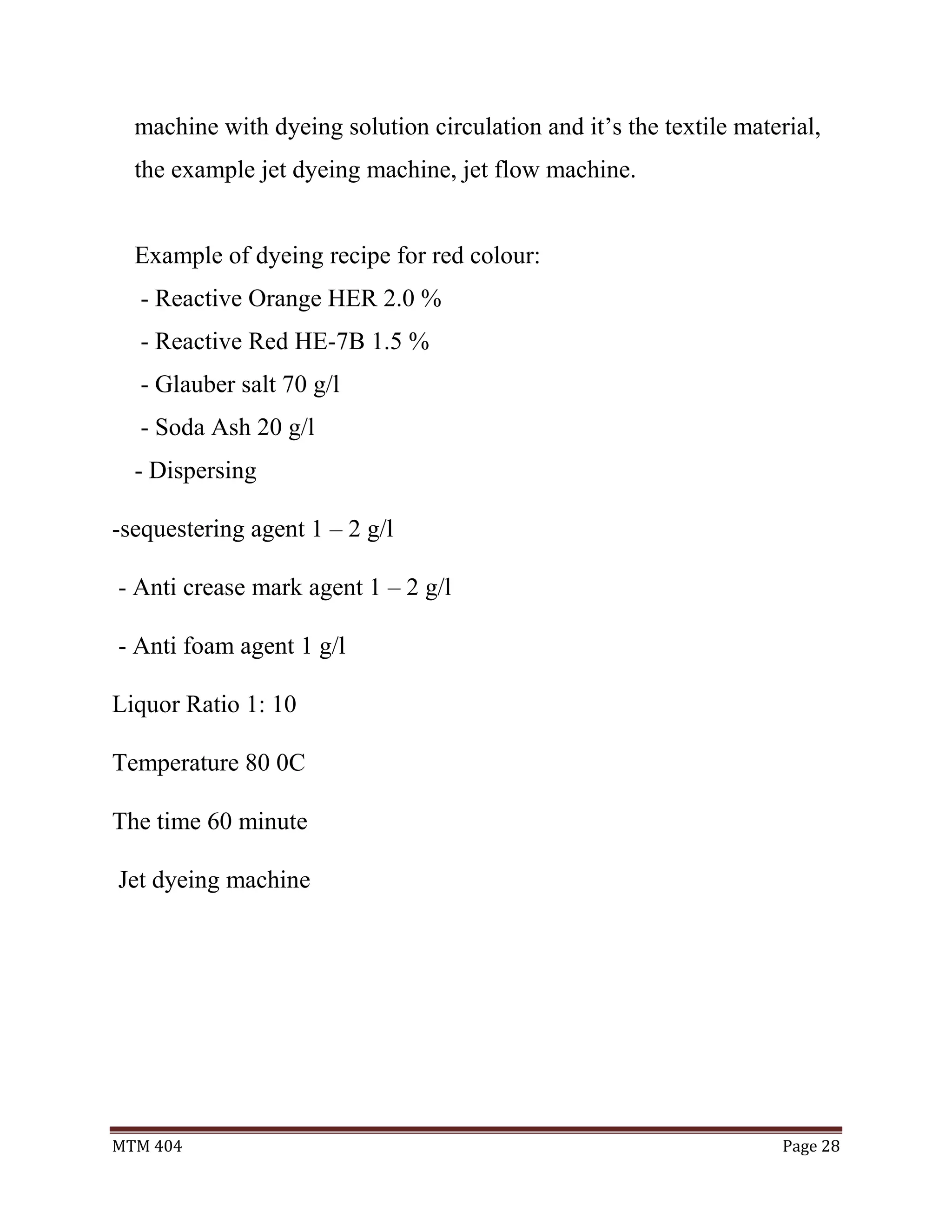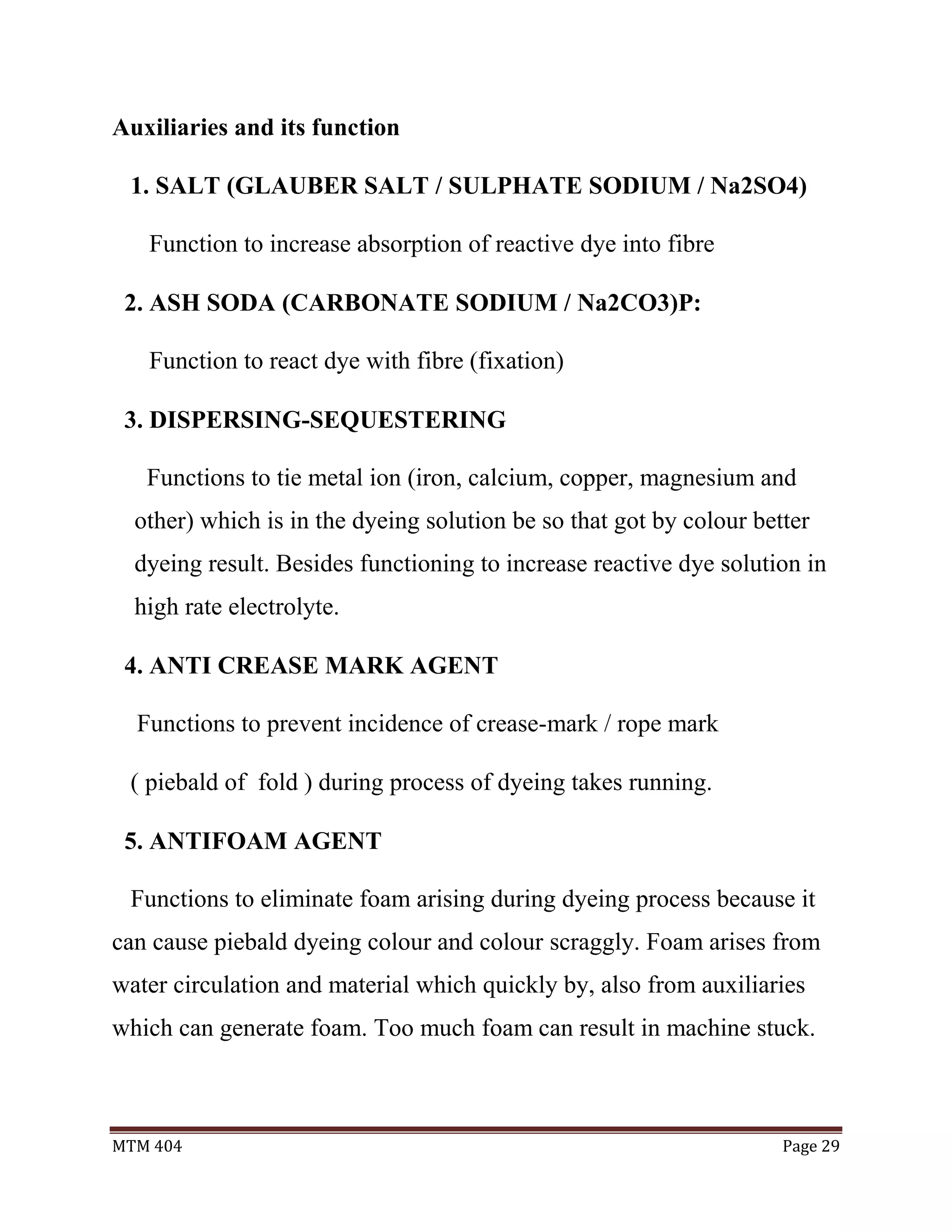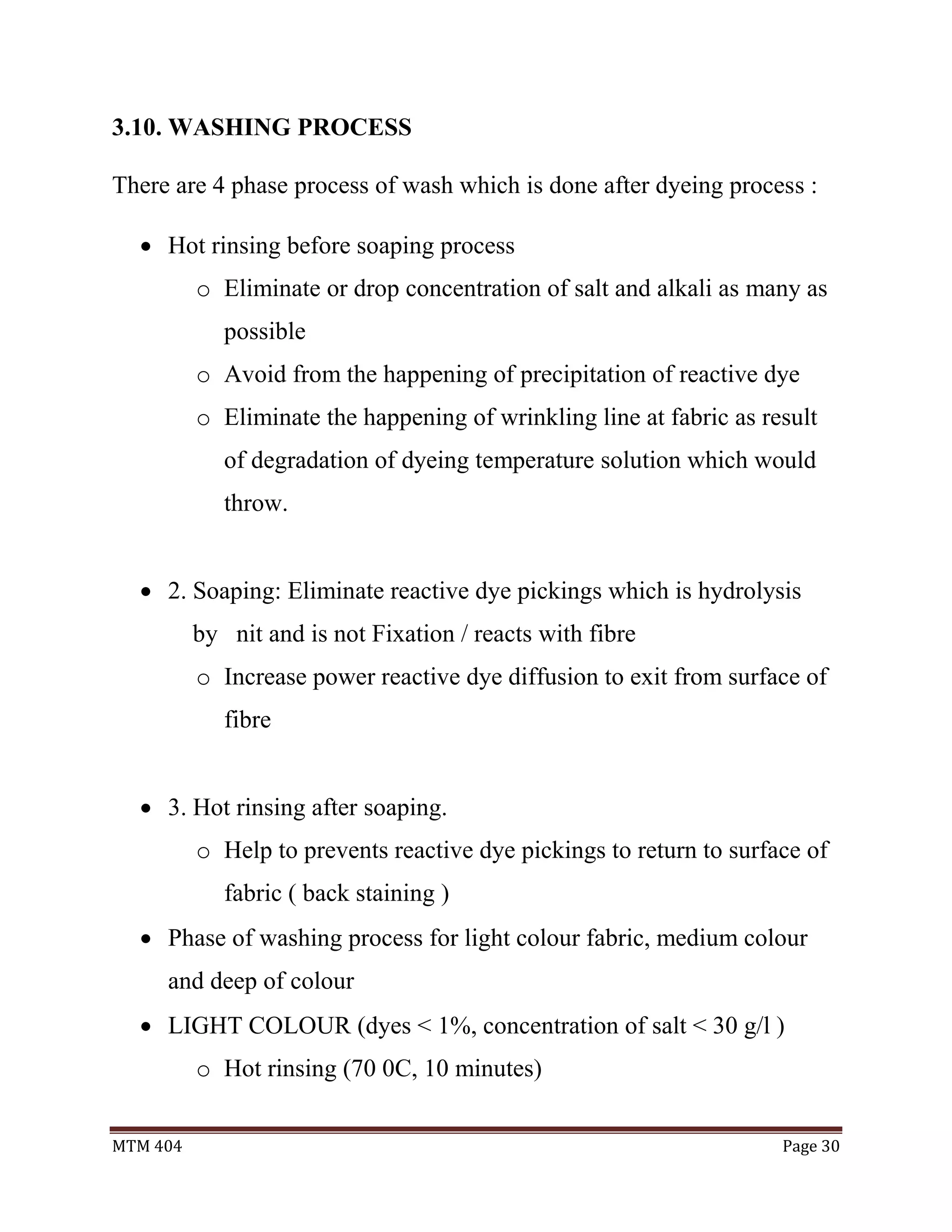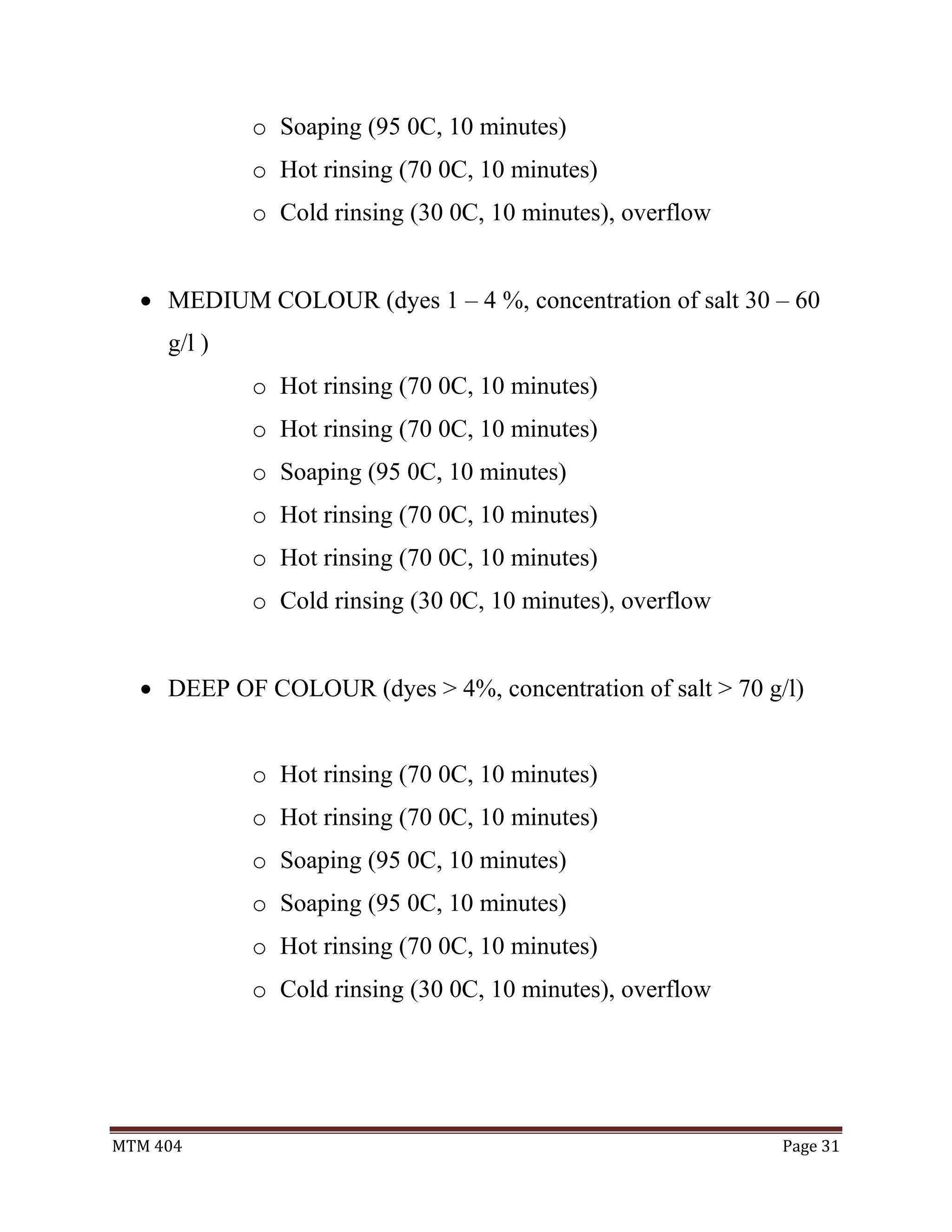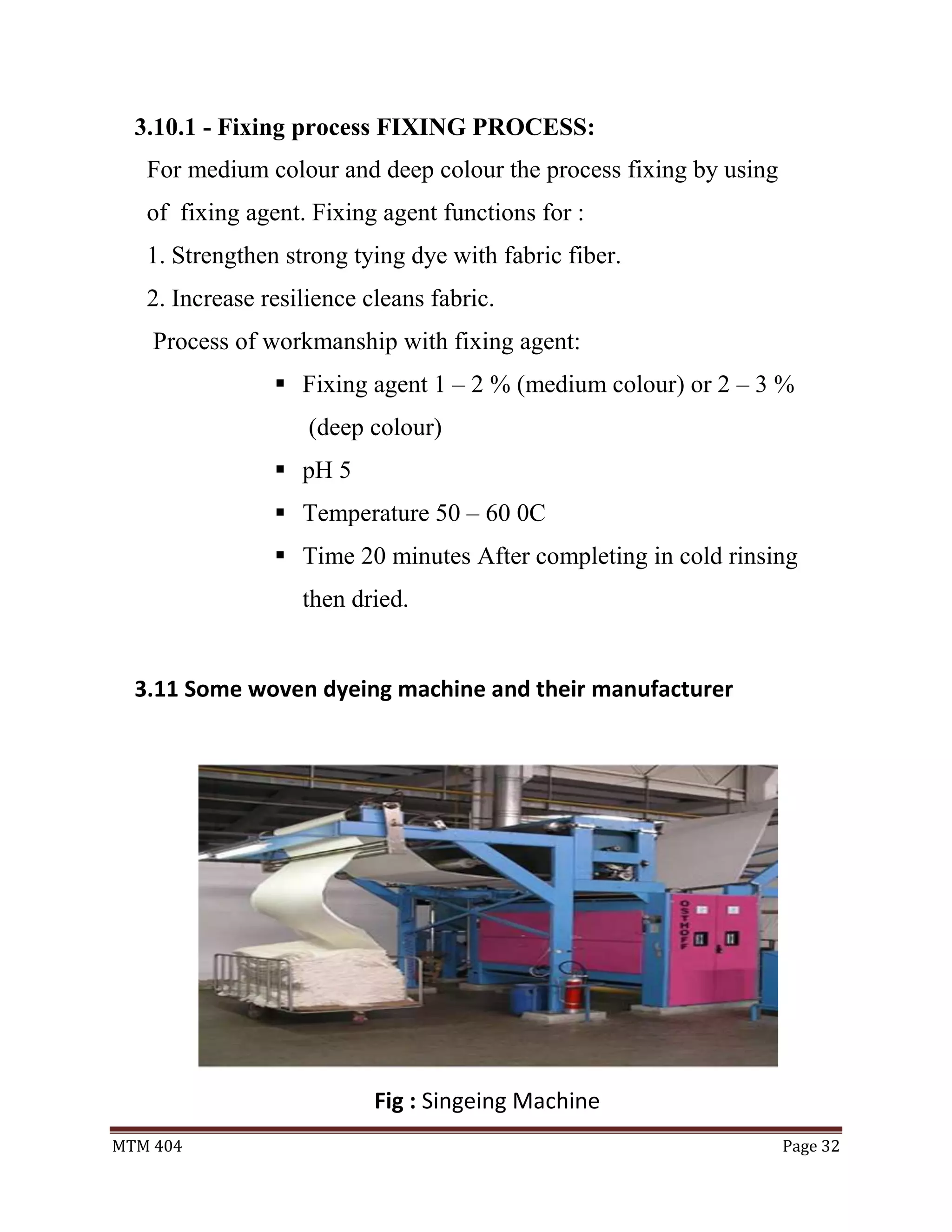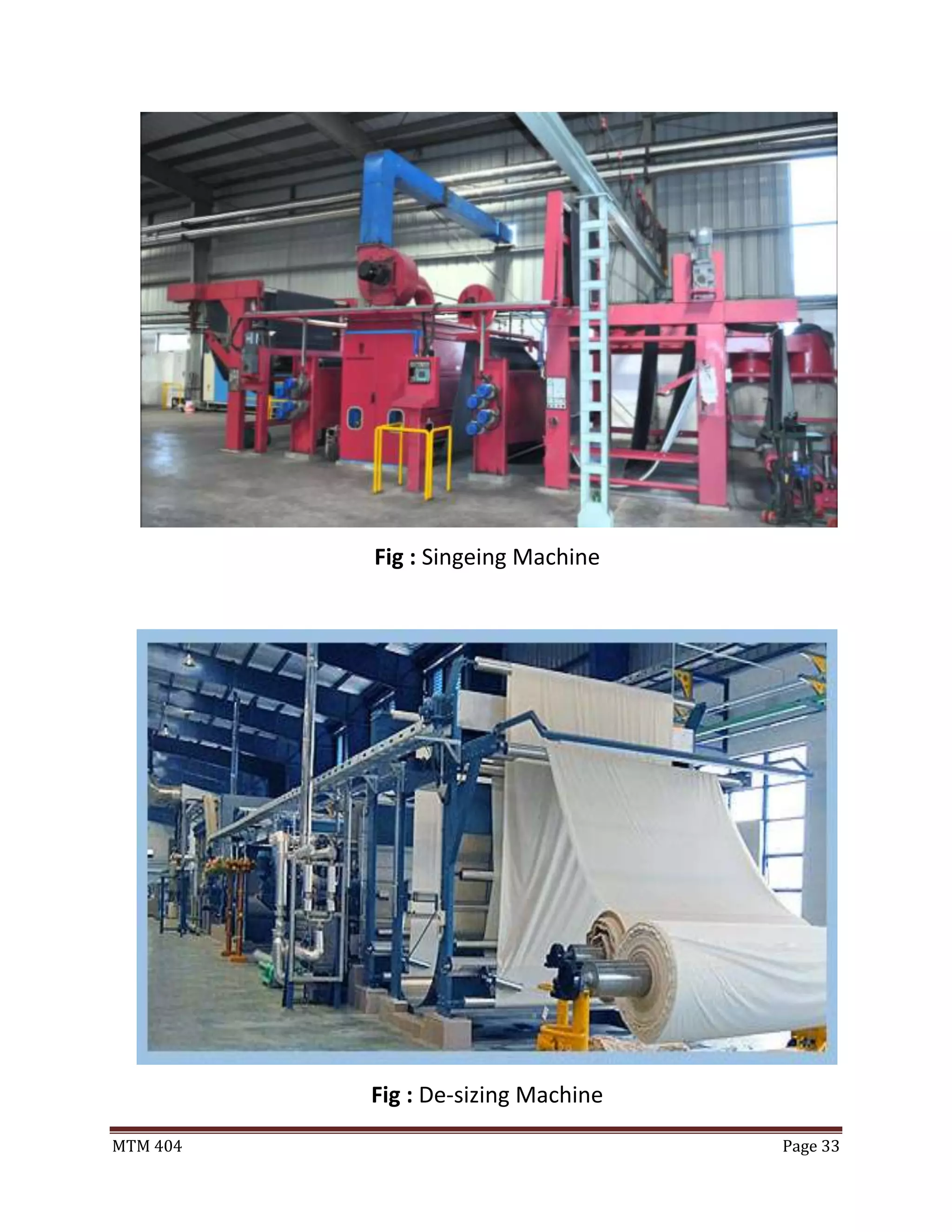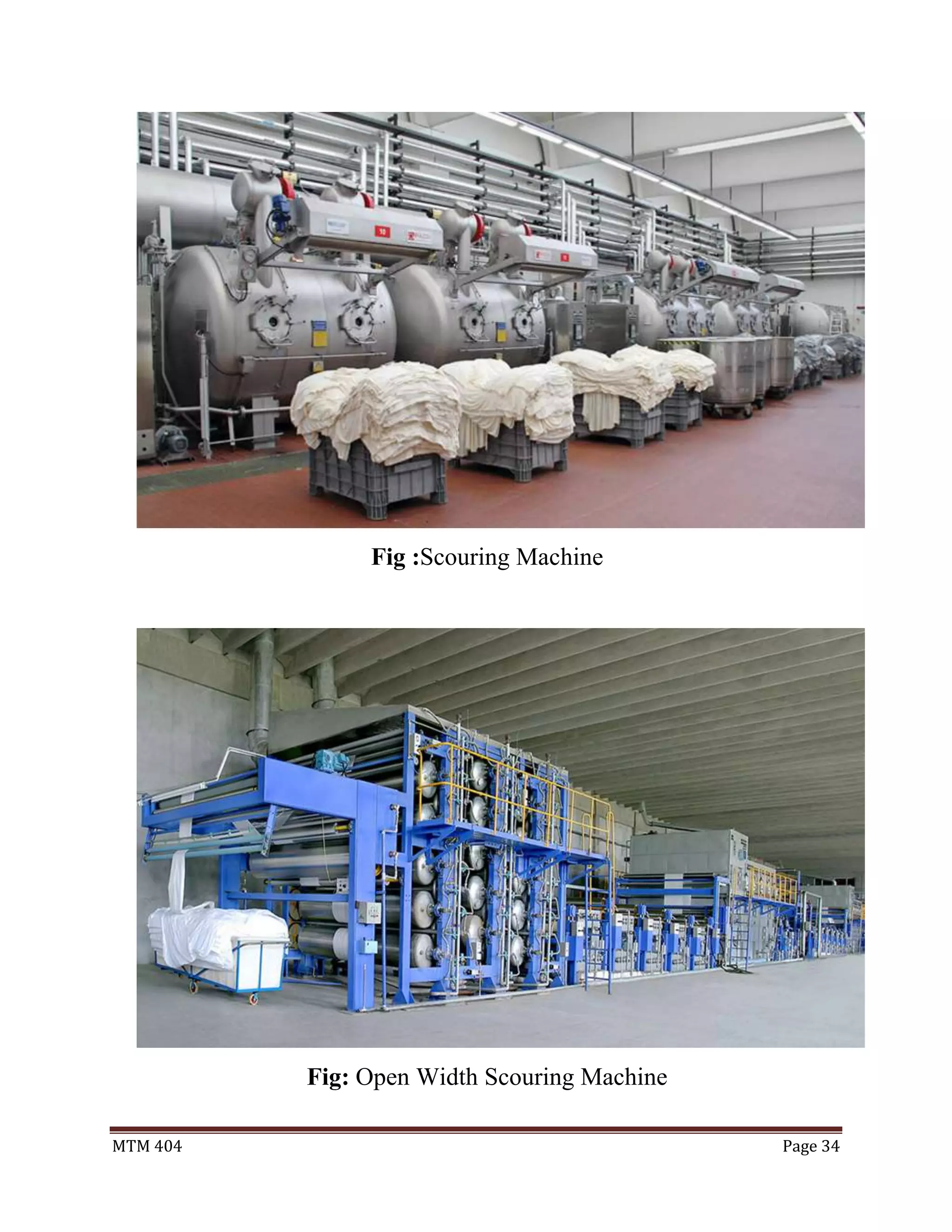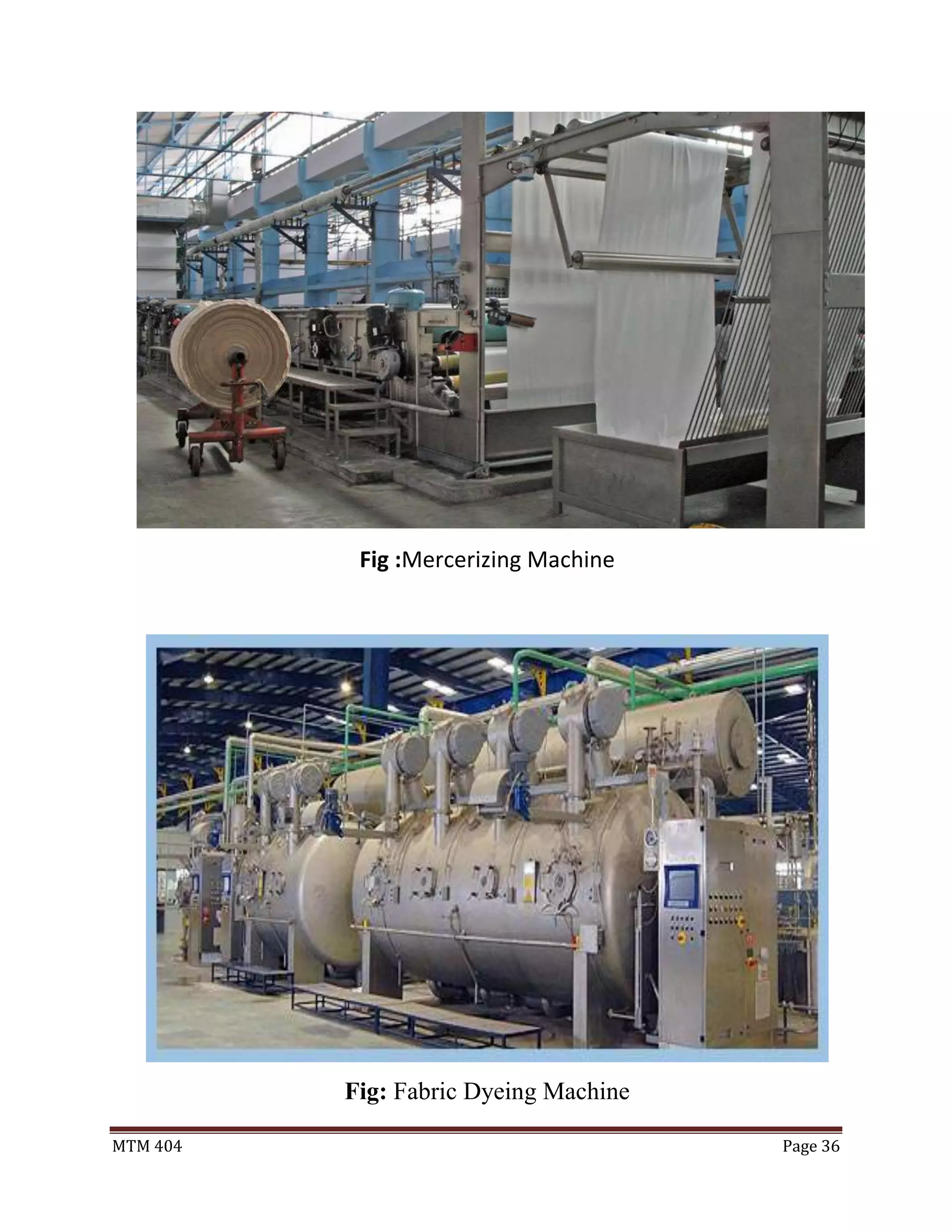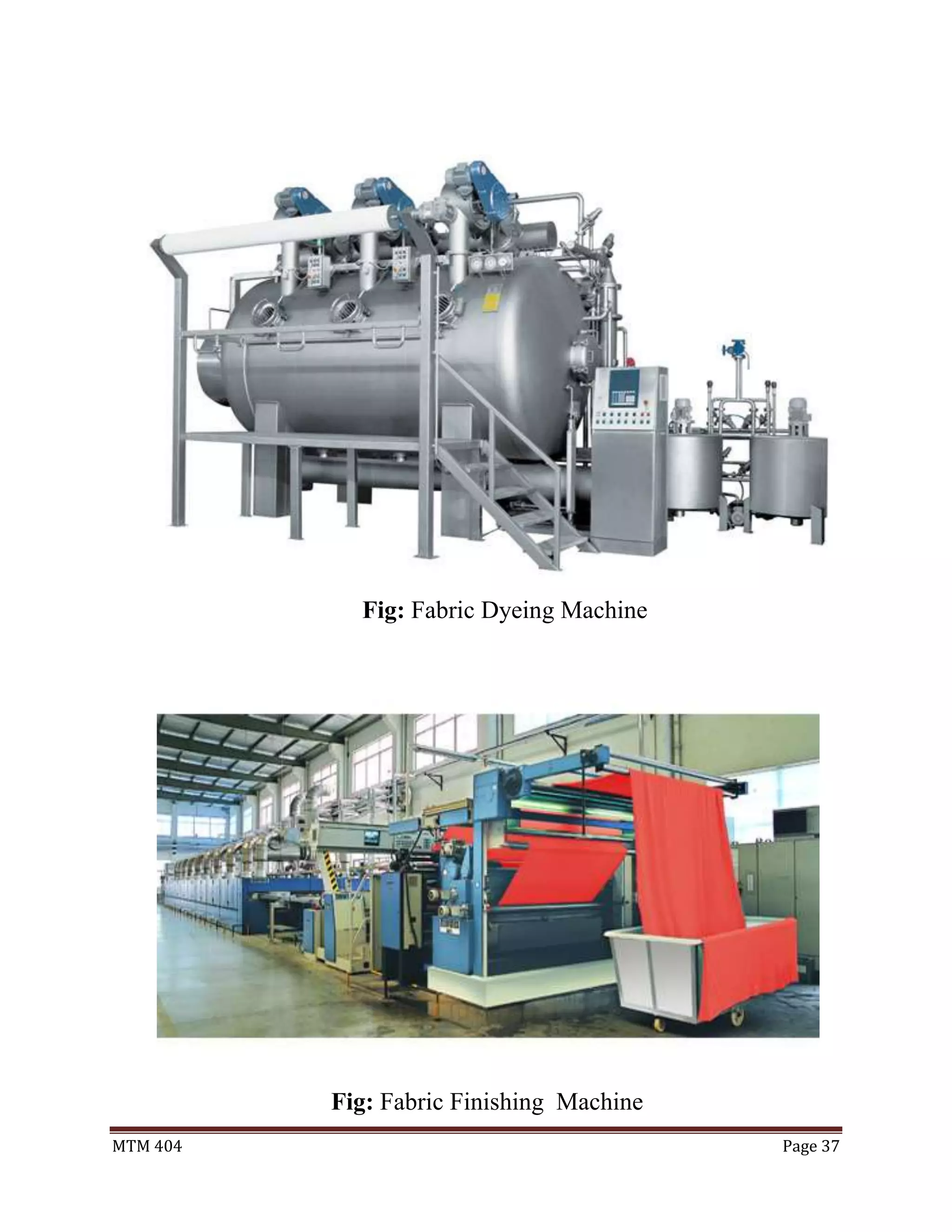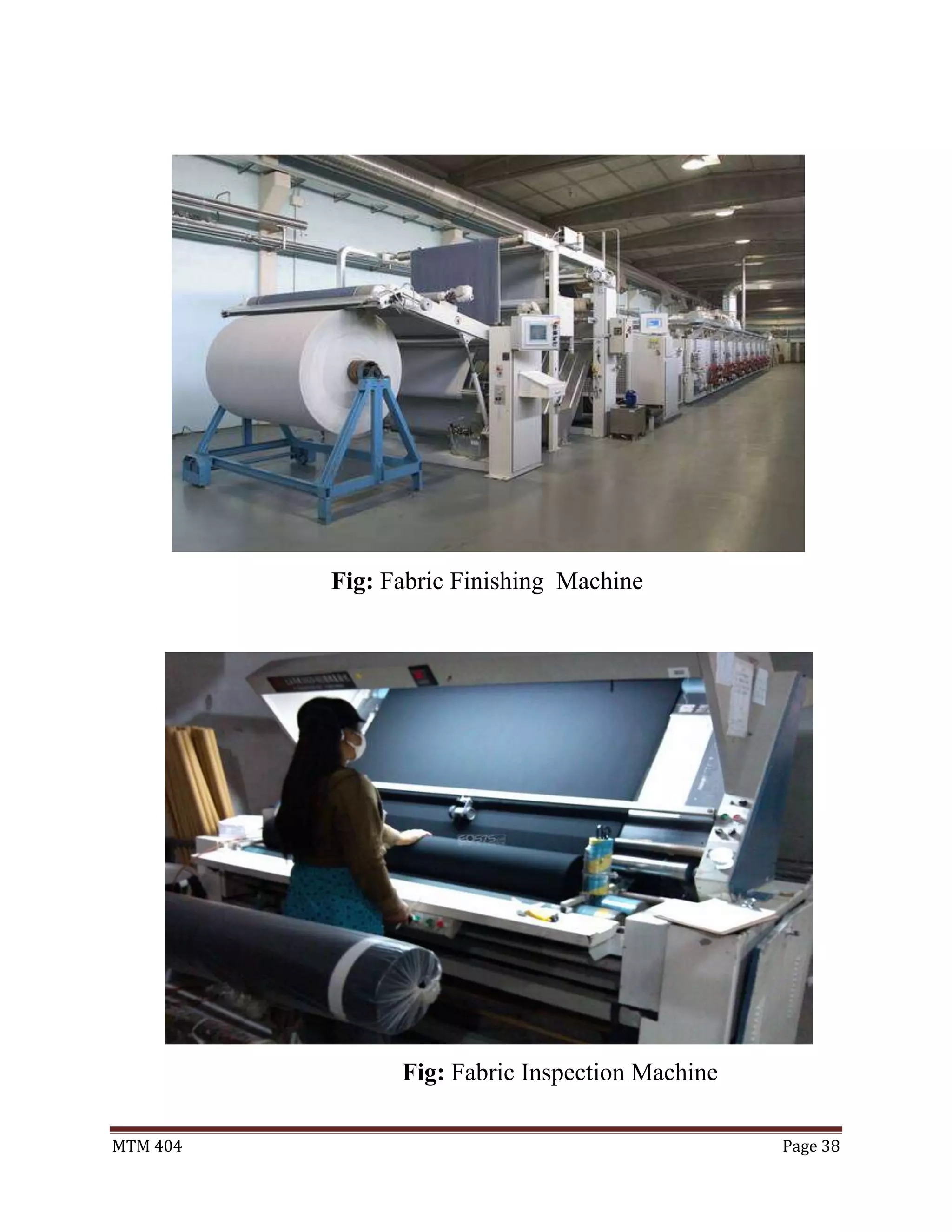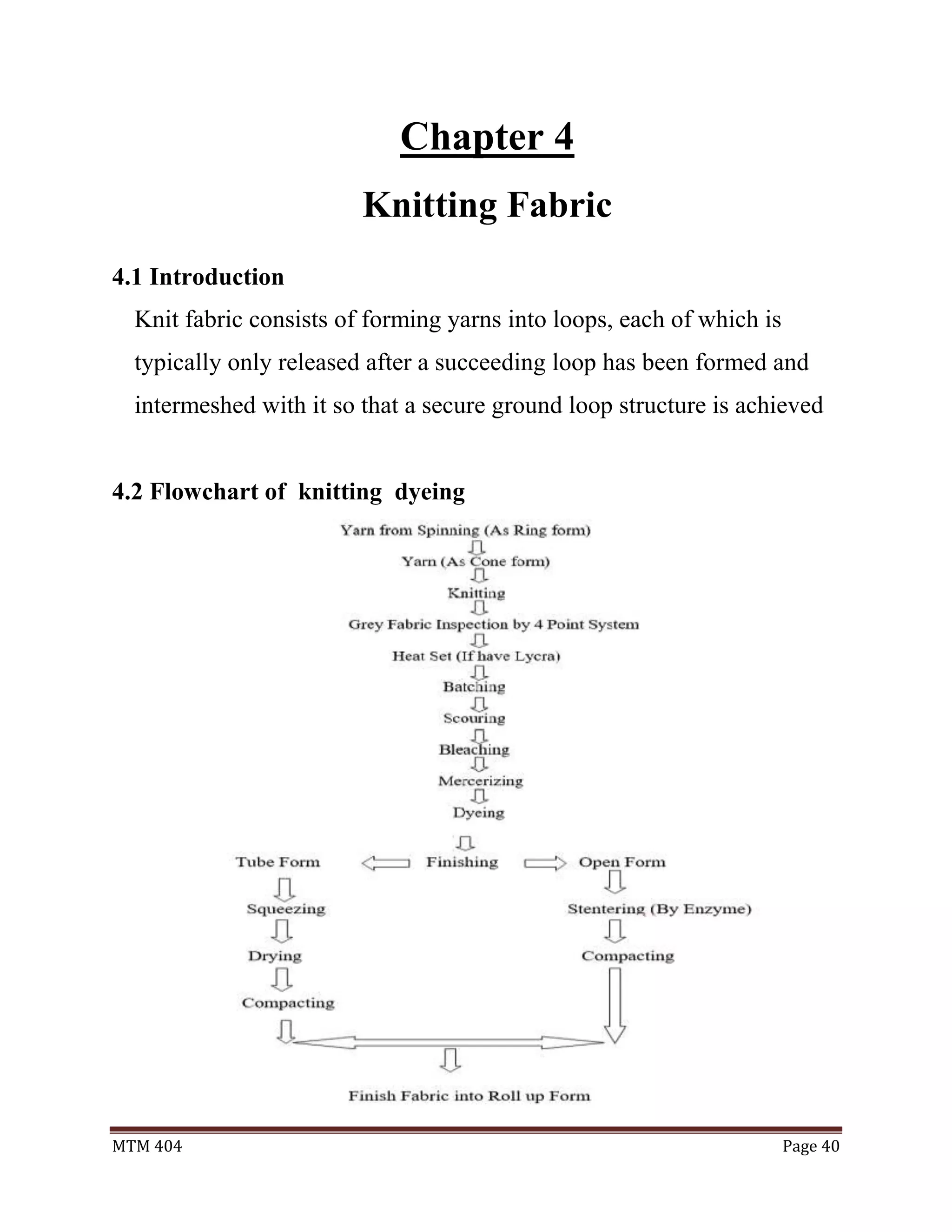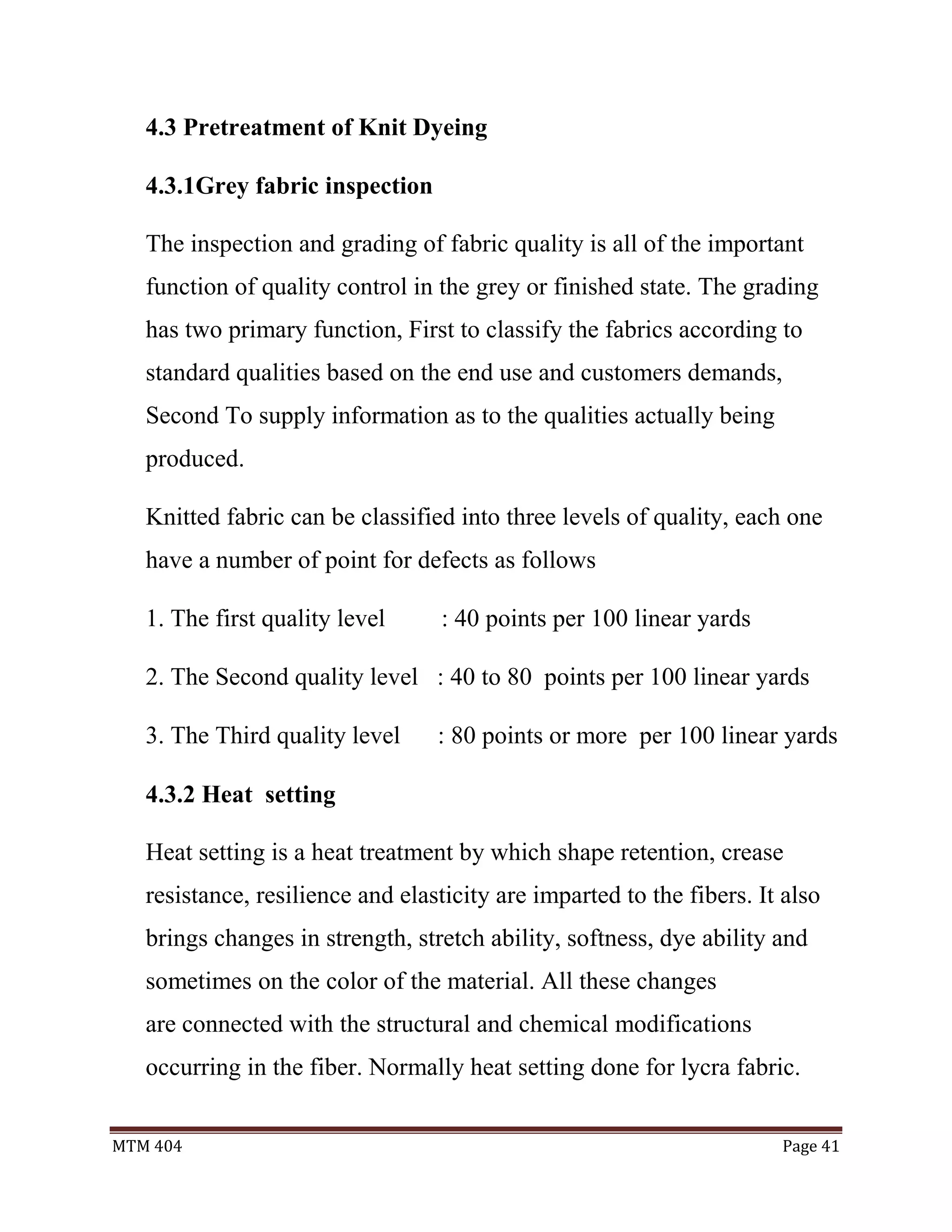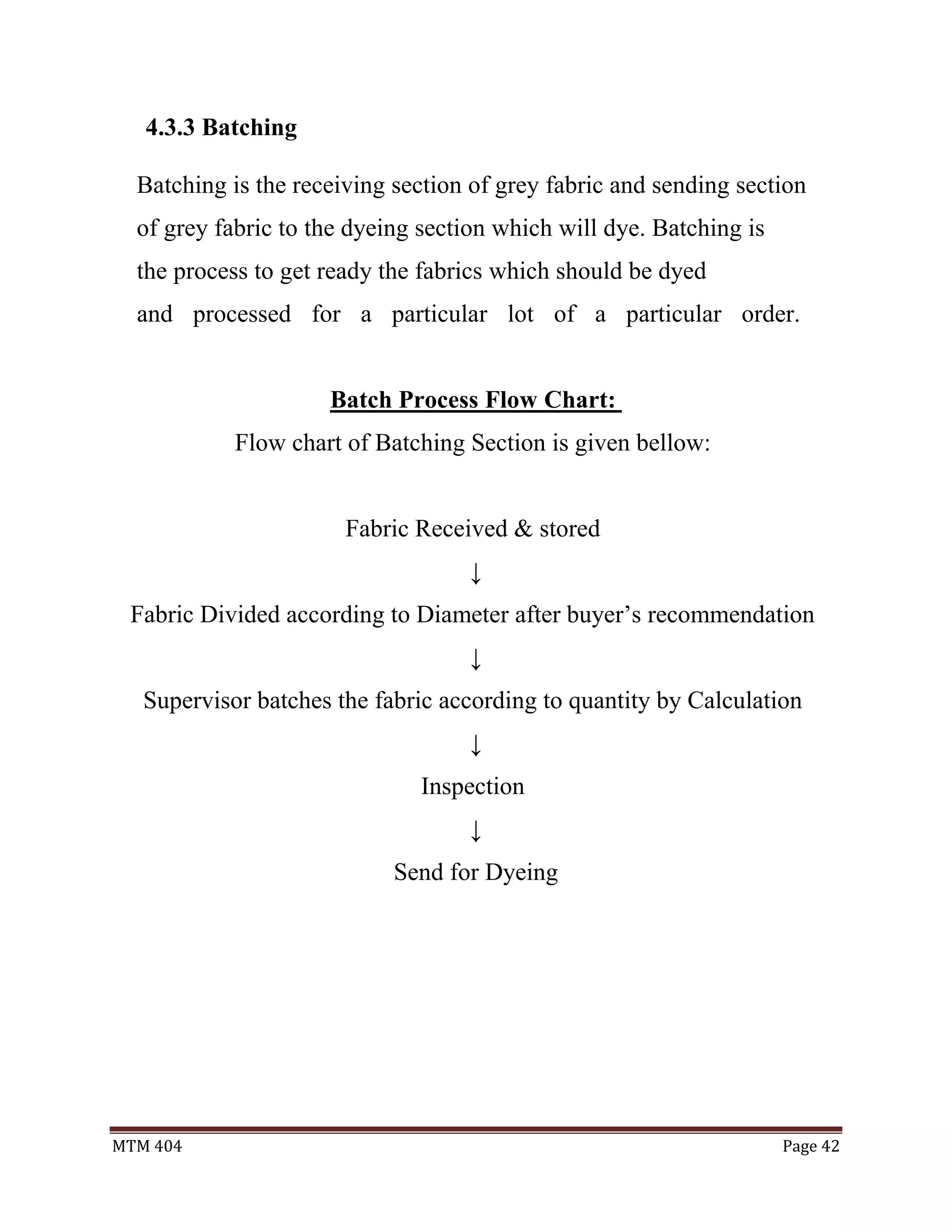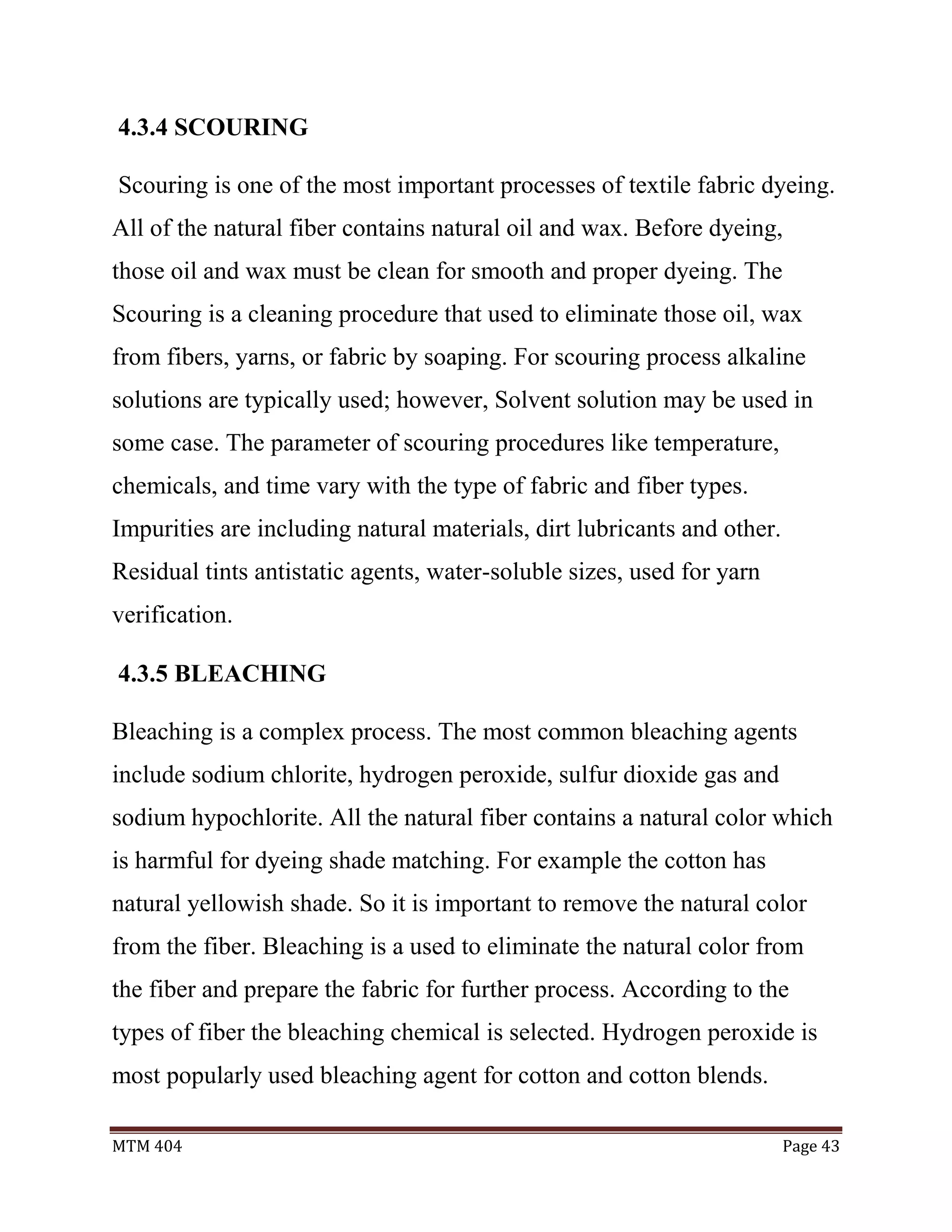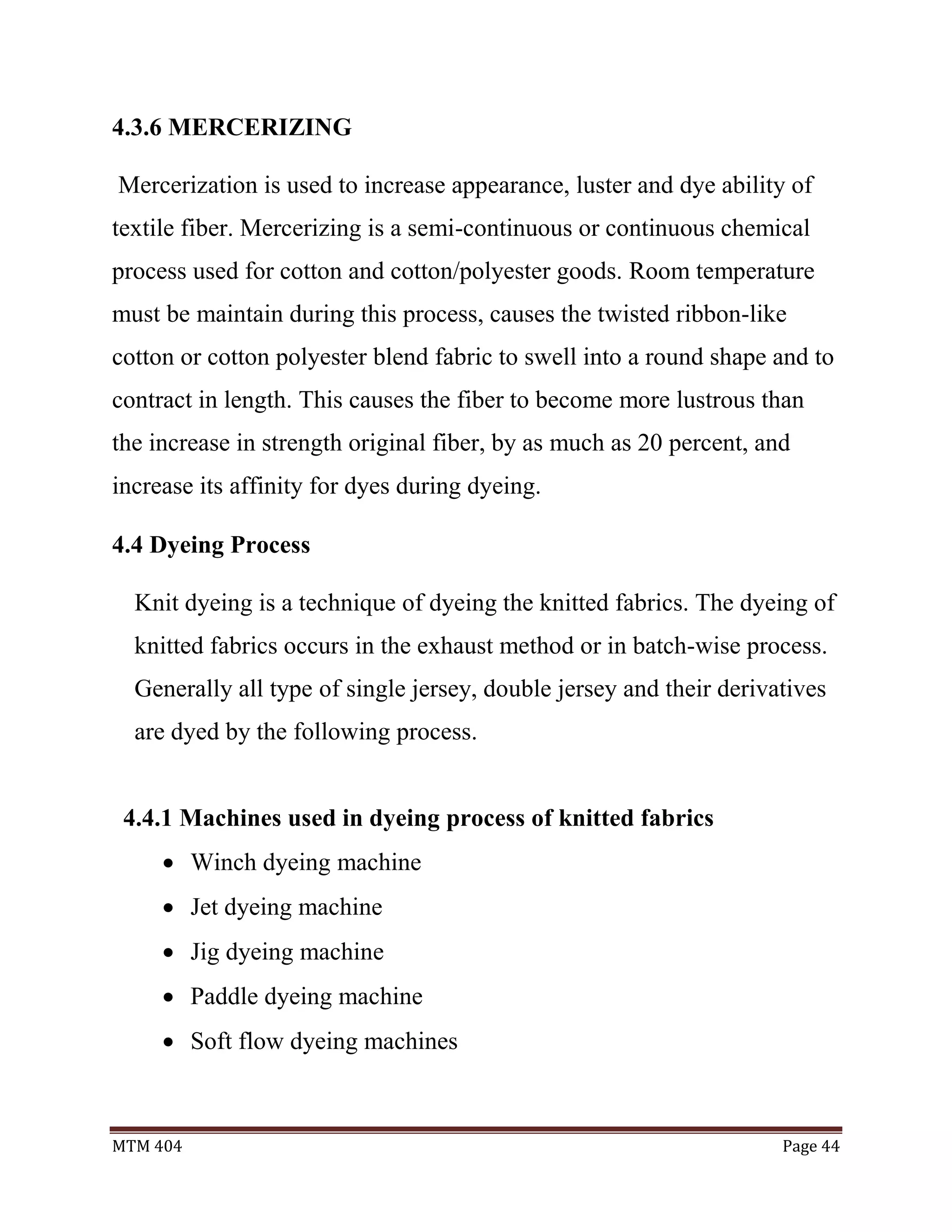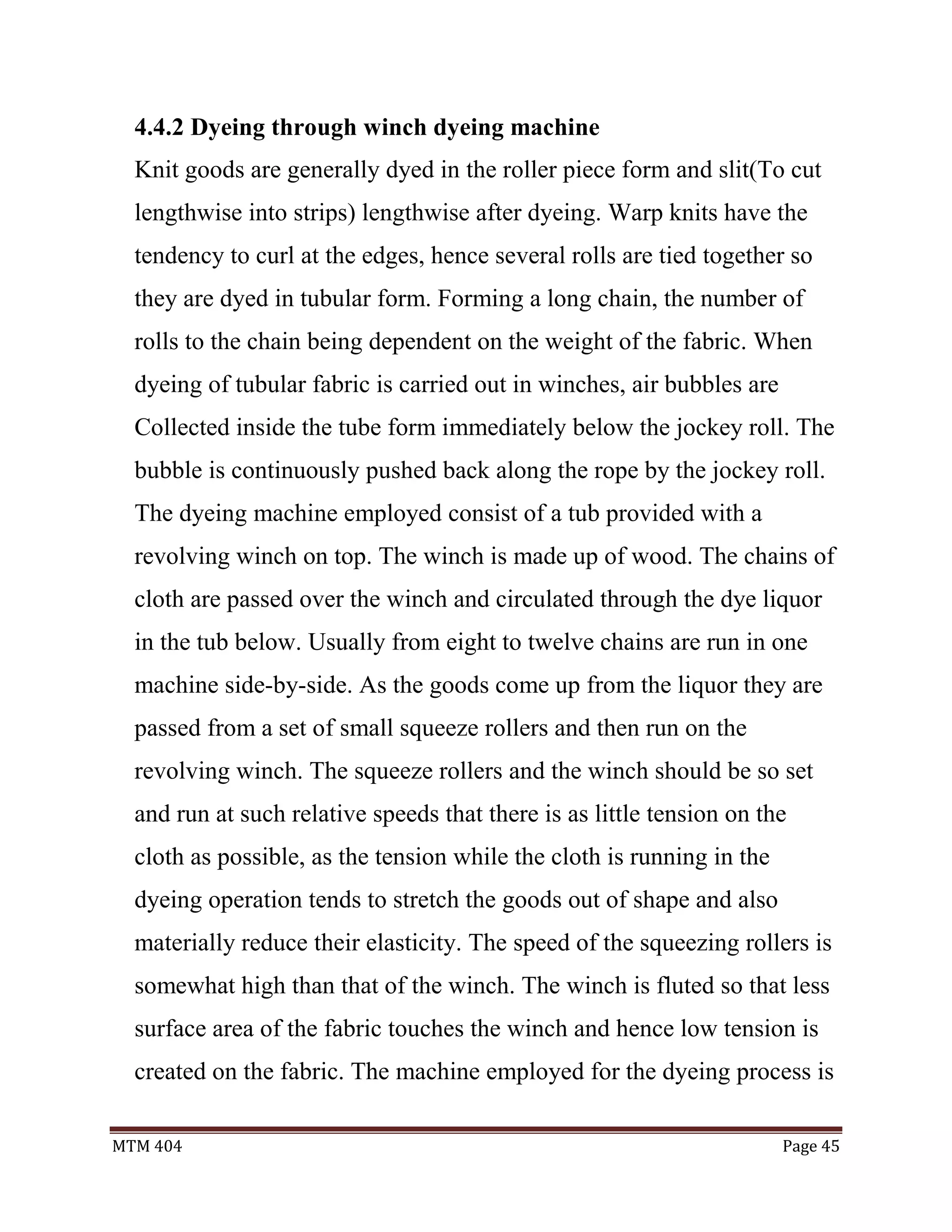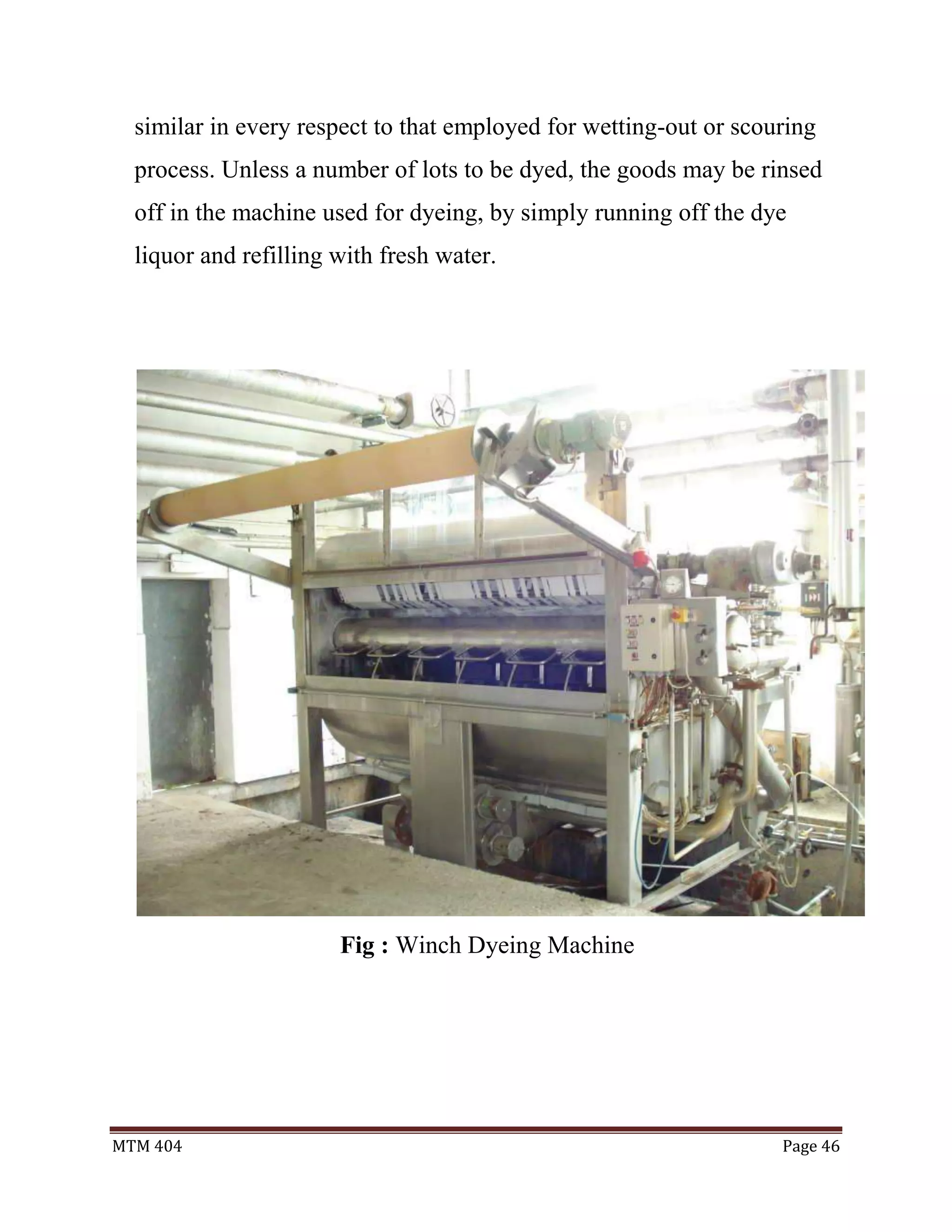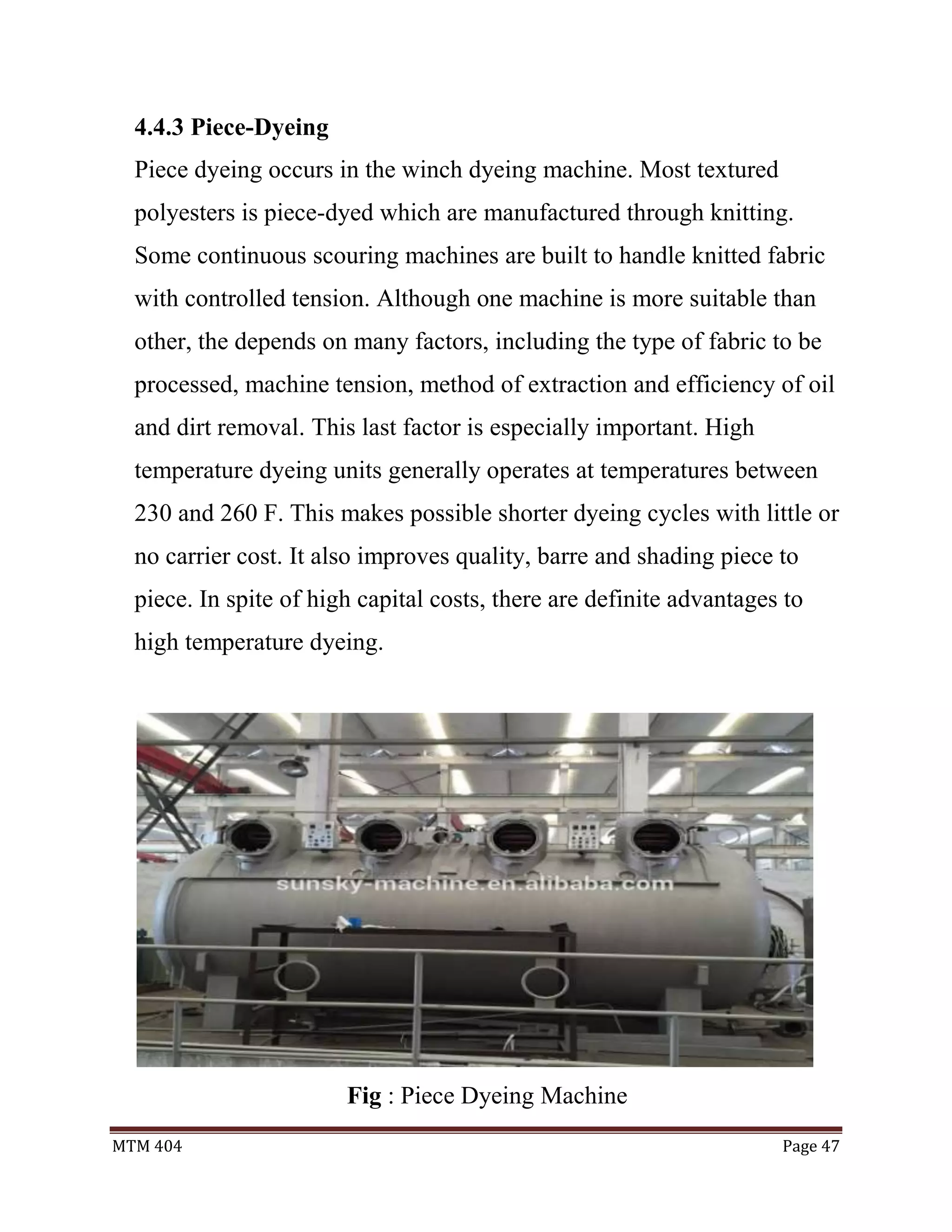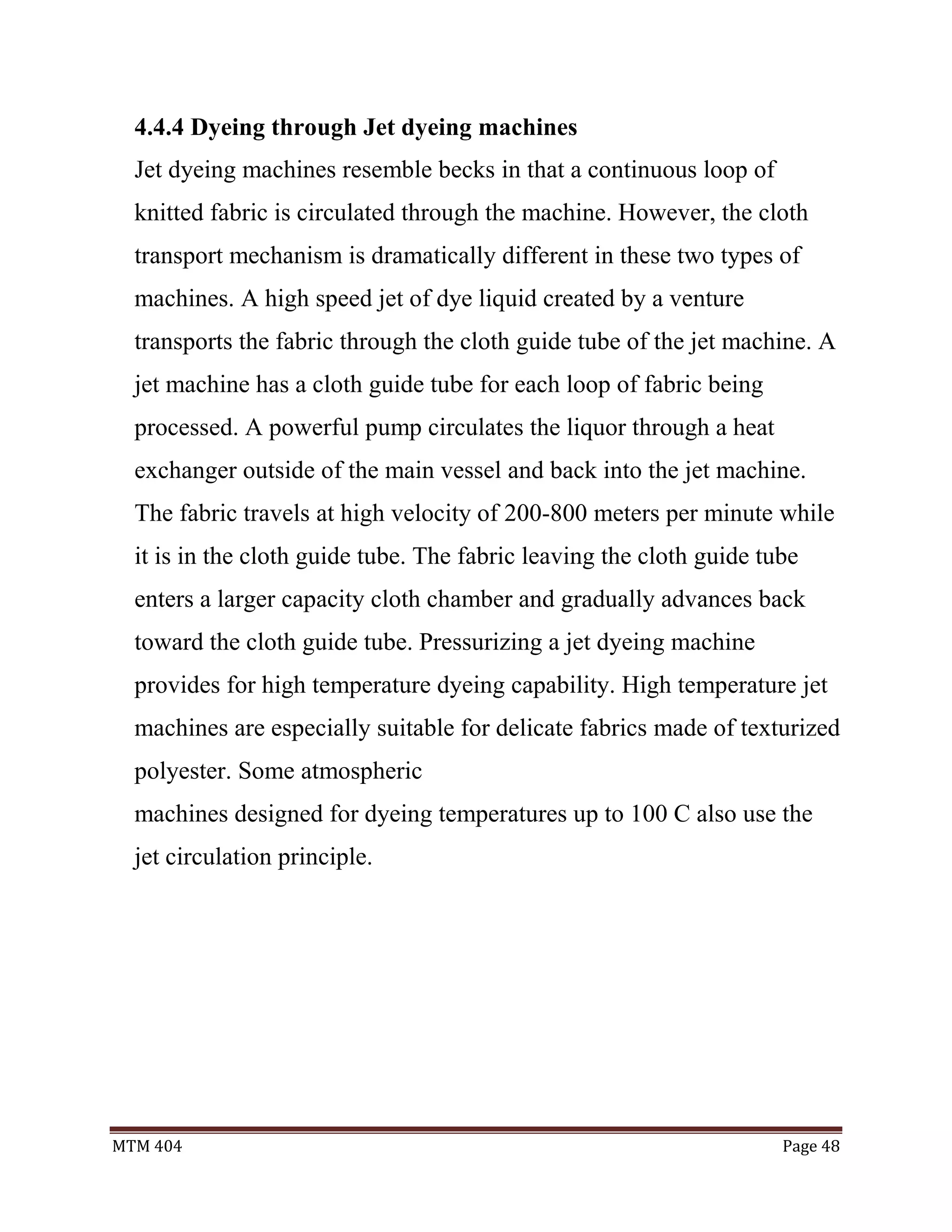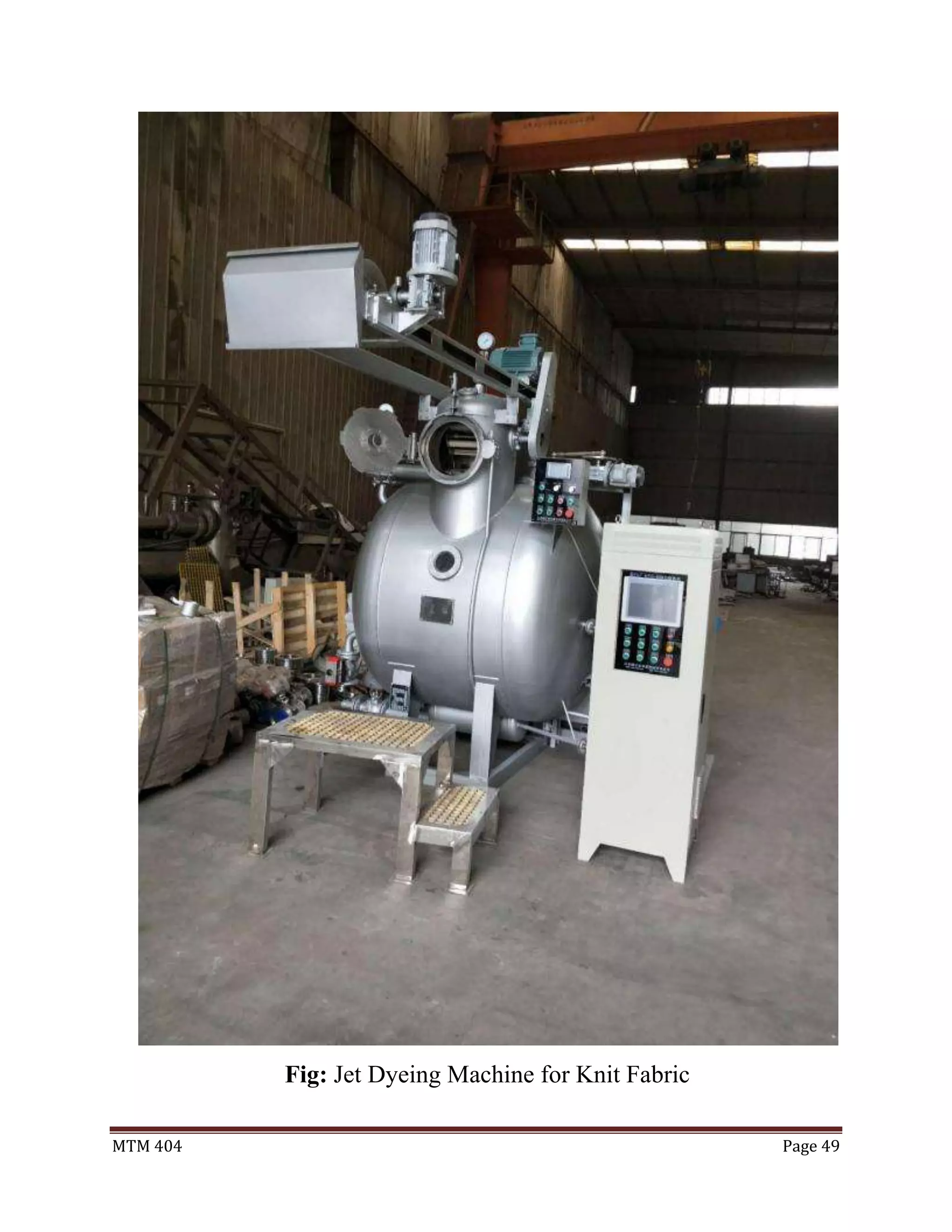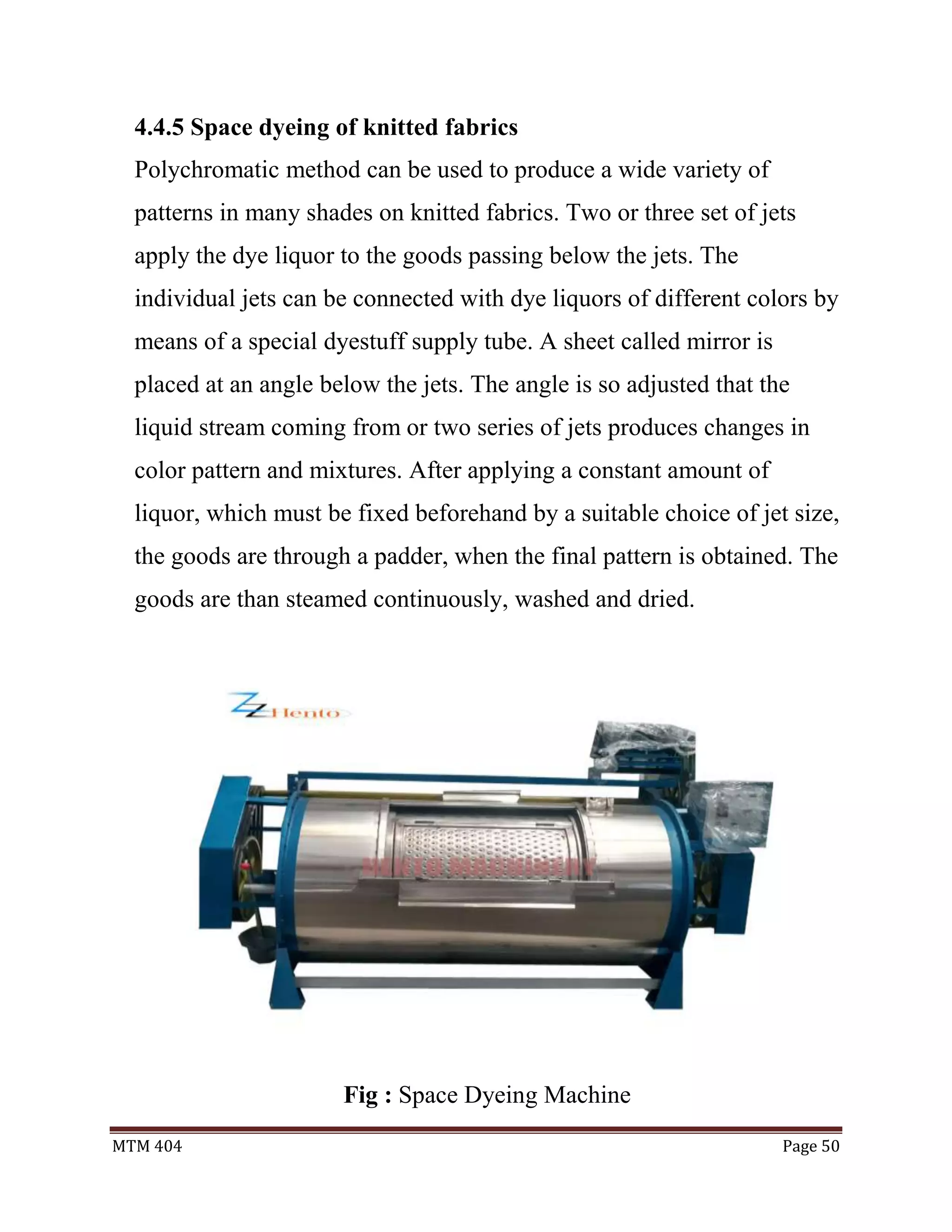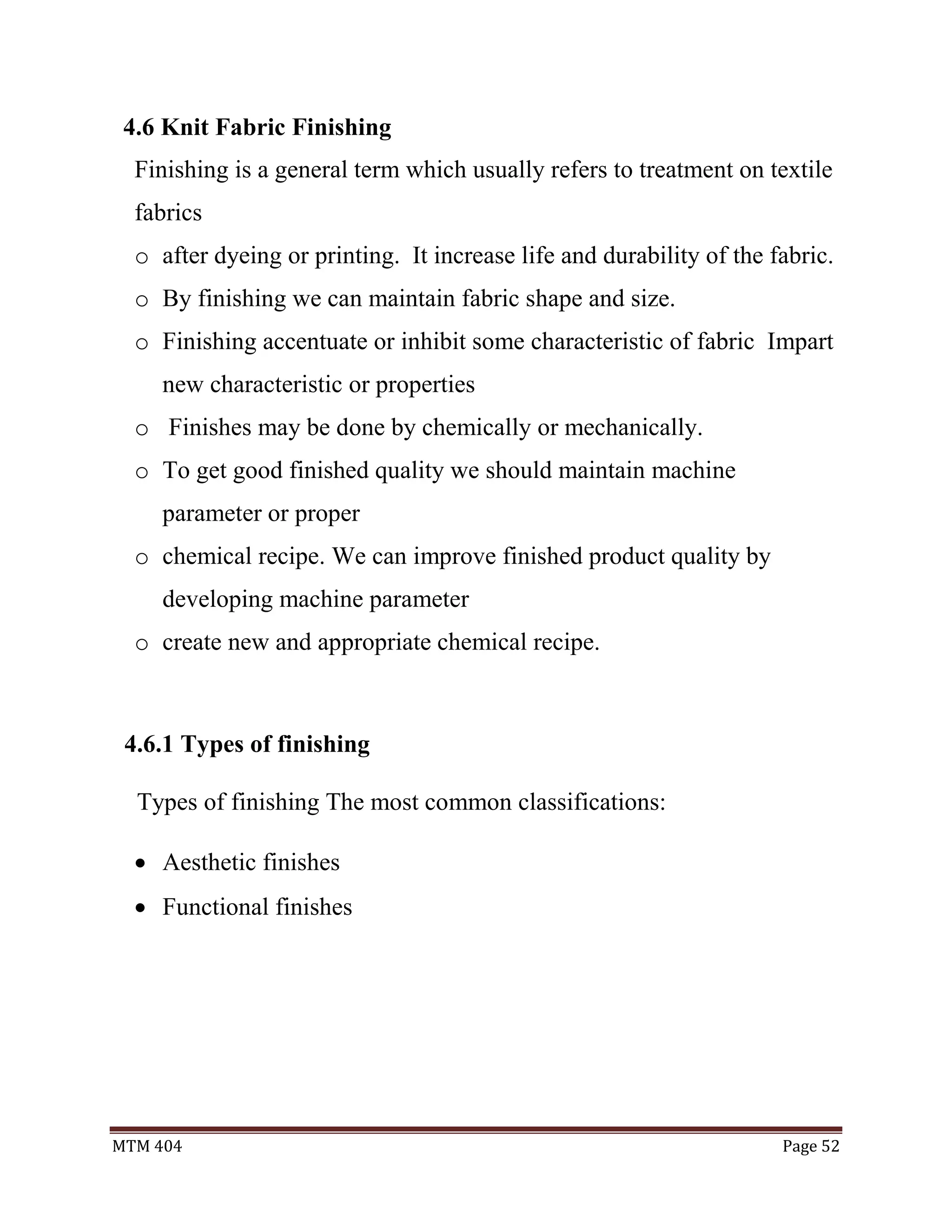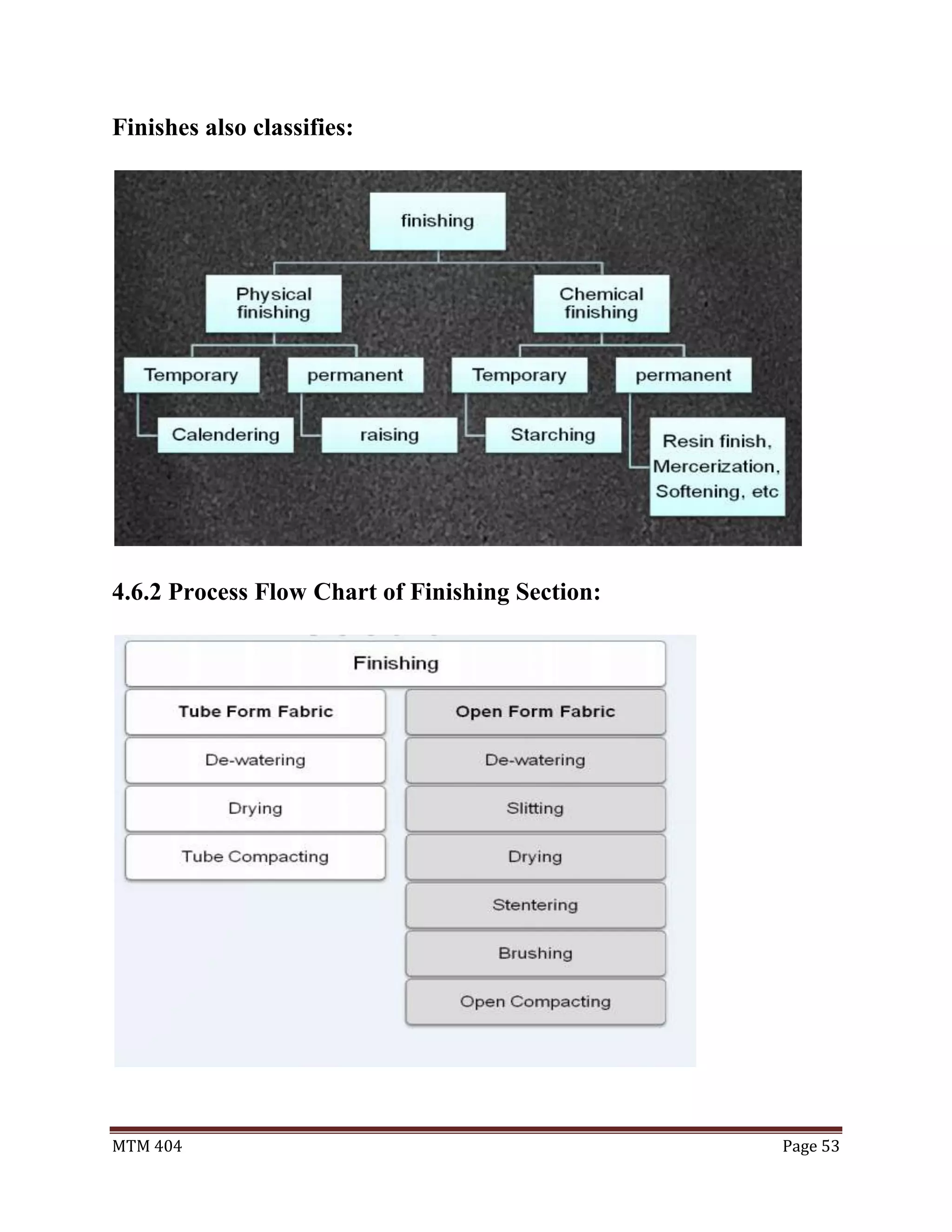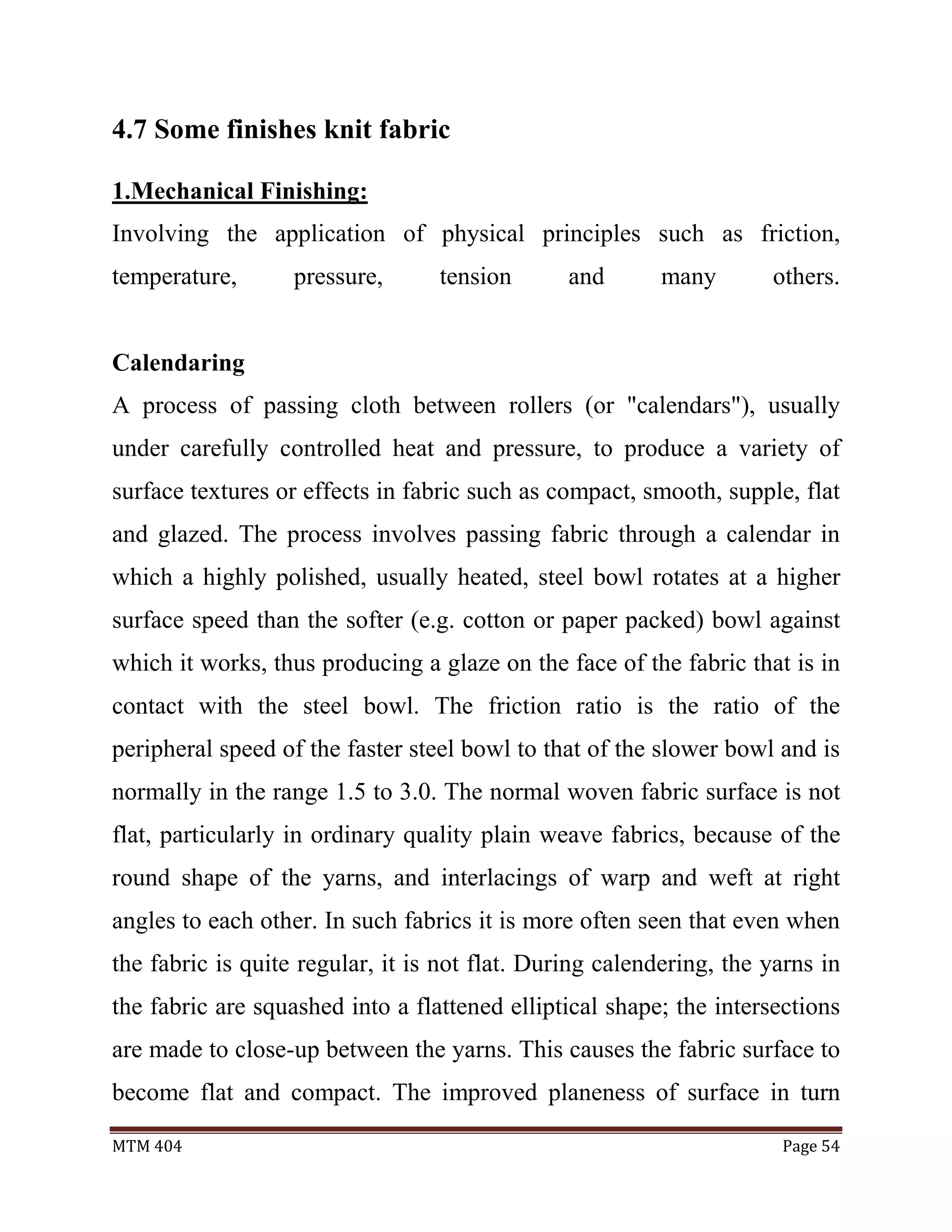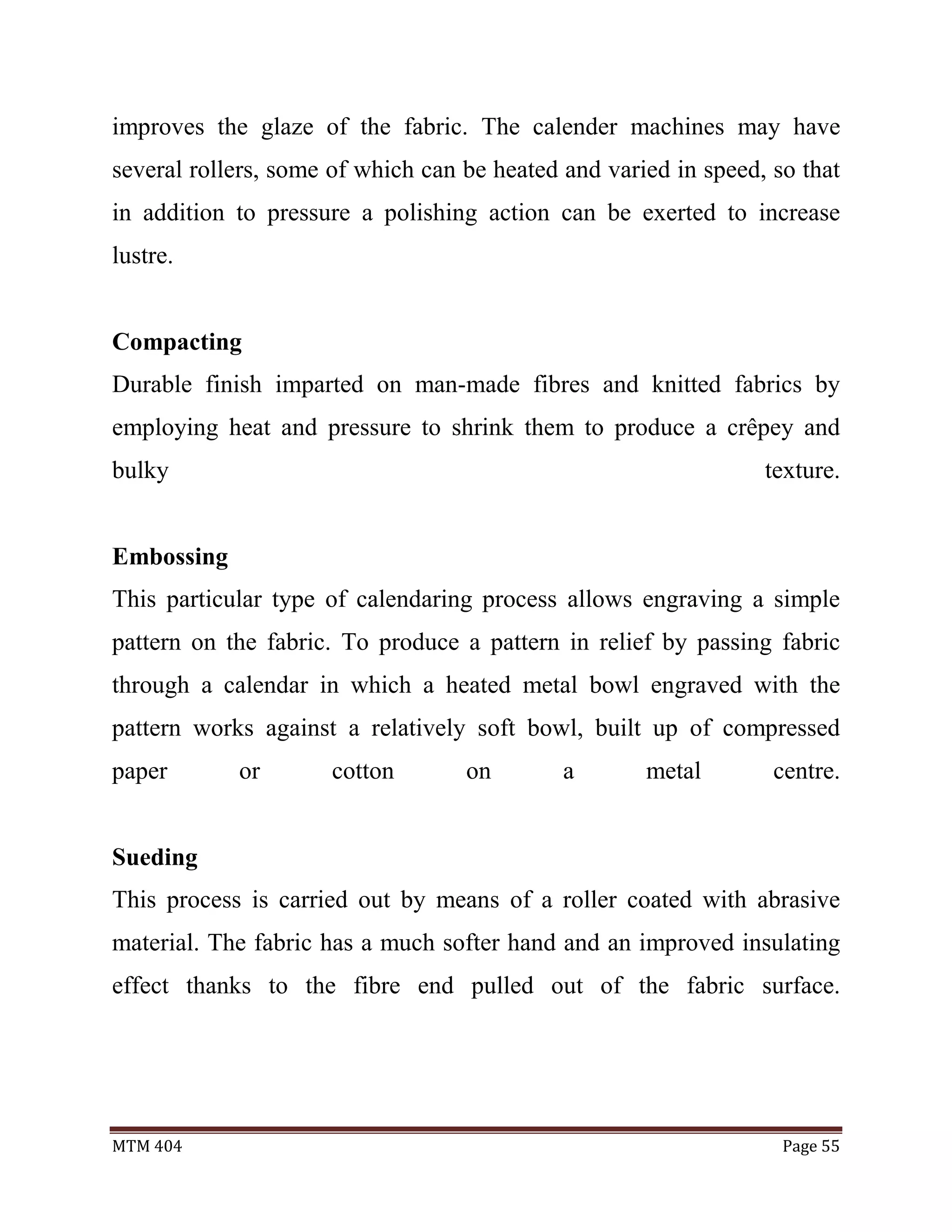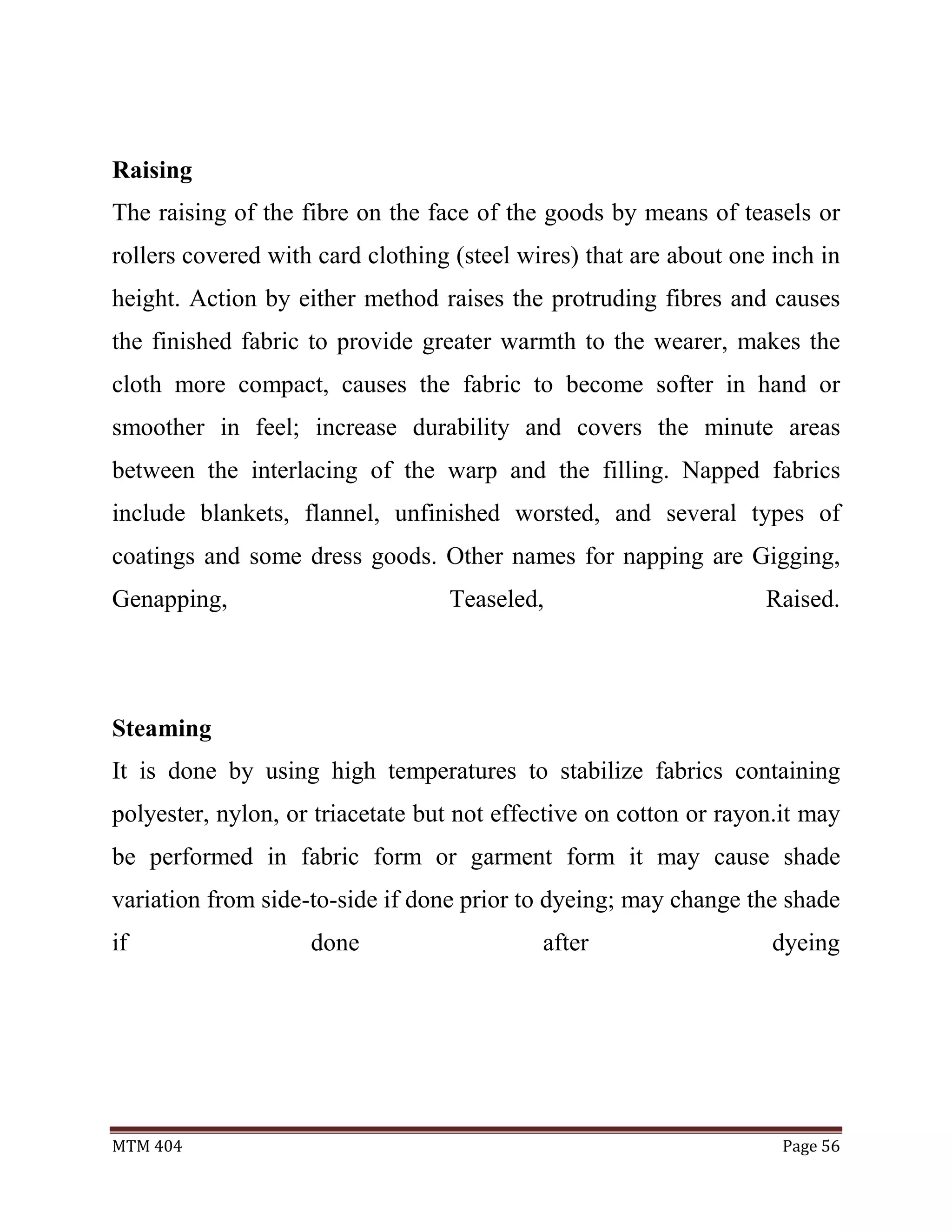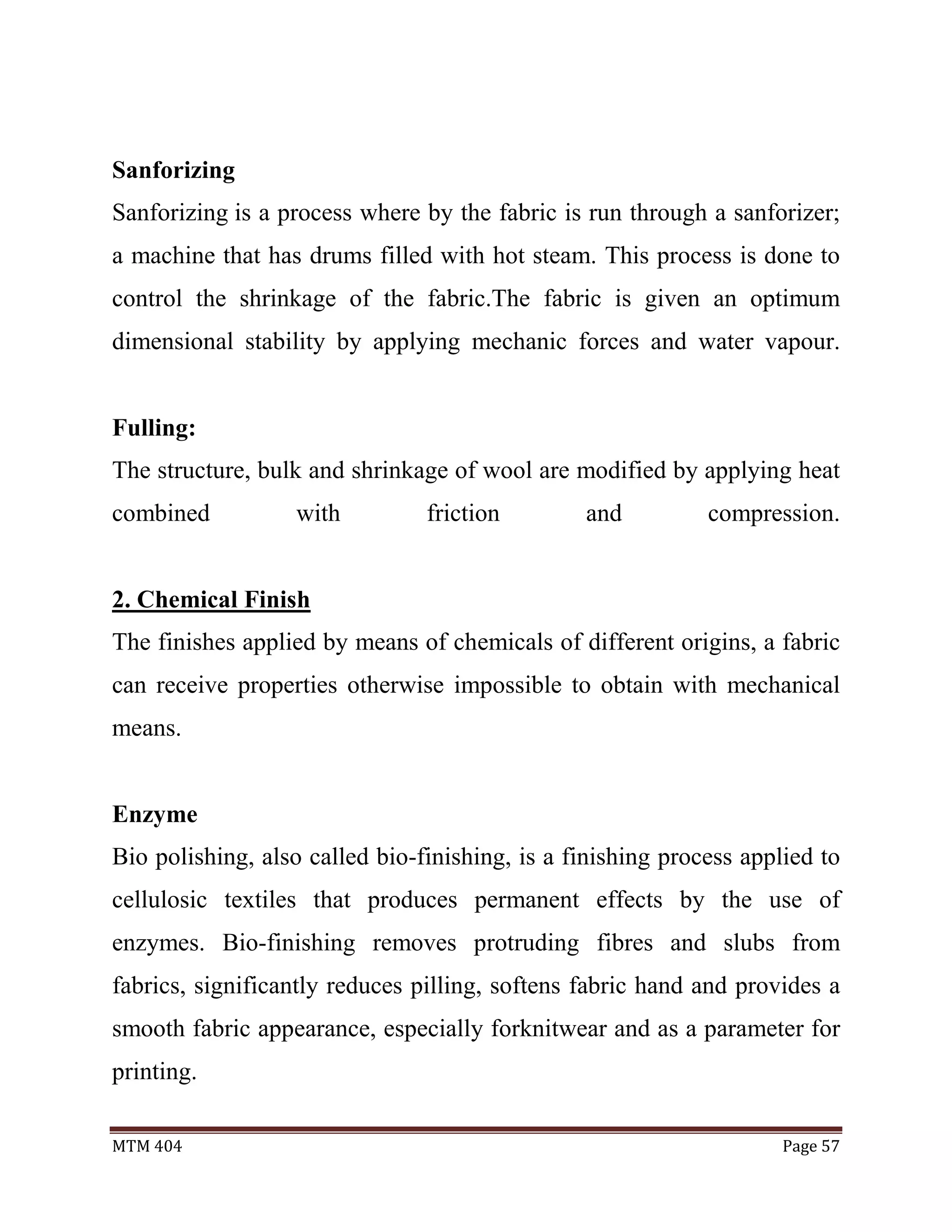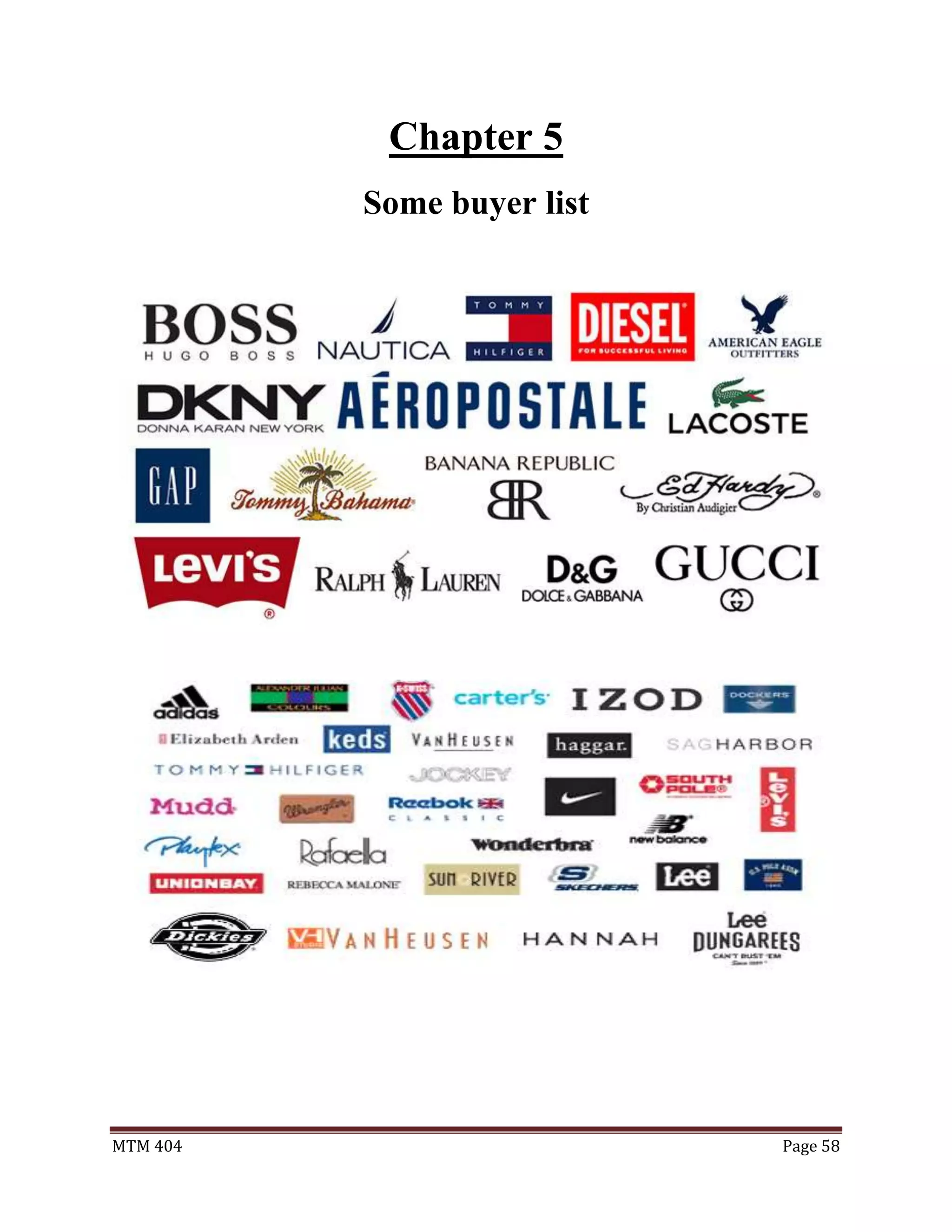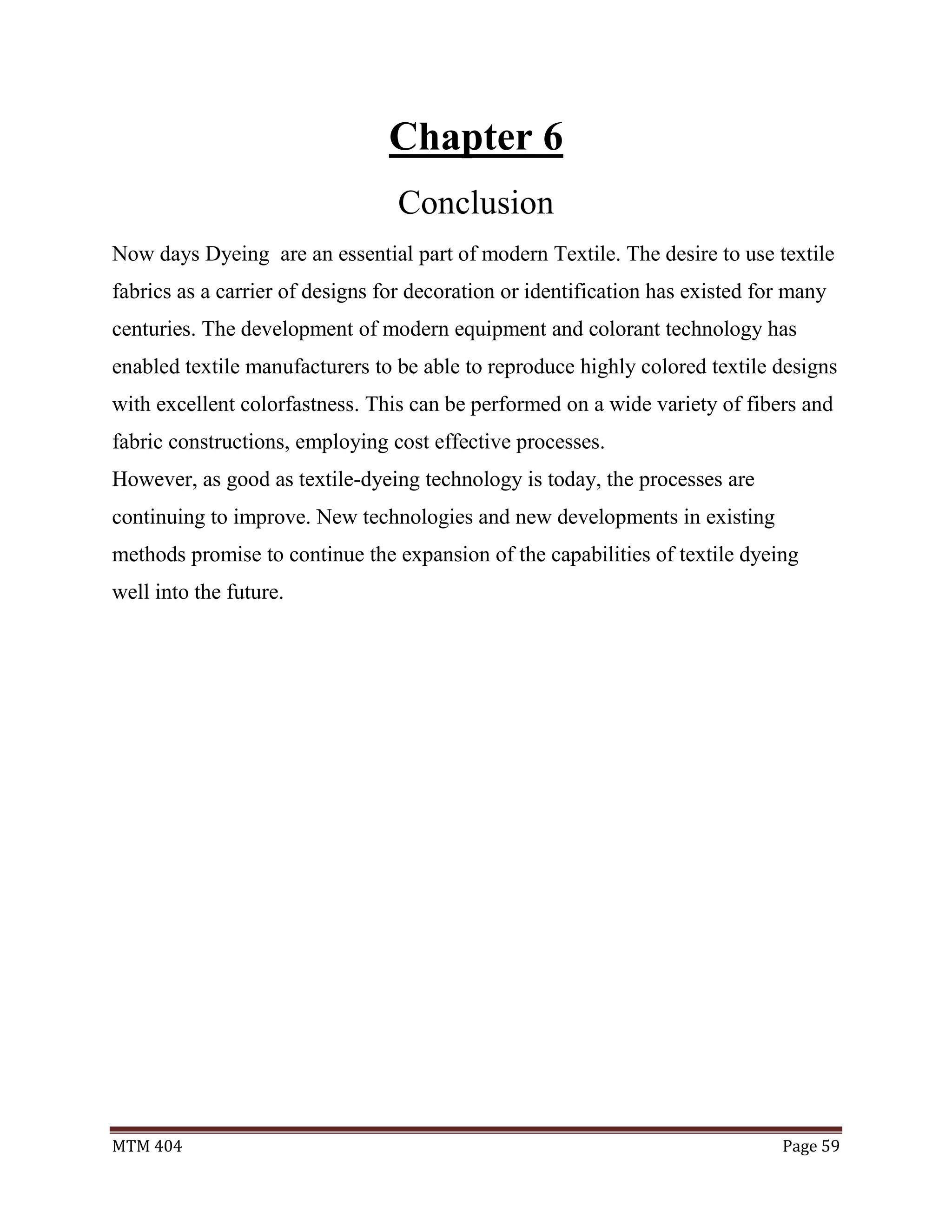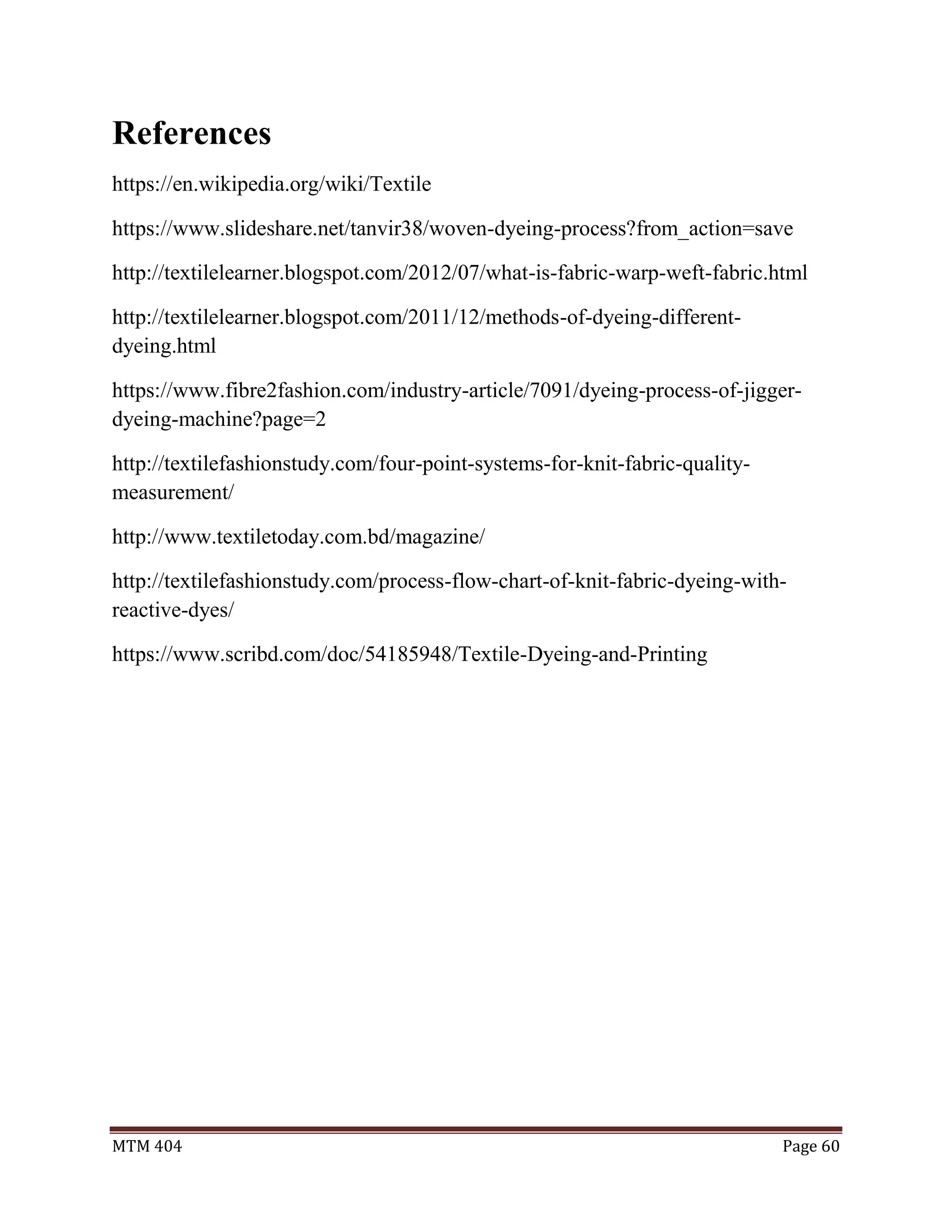The document discusses advancements in dyeing technology, aiming to enhance textile coloration, productivity, safety, and quality through various machinery used in textile processing. It compares different types of fabrics and dyeing methods, detailing processes such as singeing, desizing, scouring, and bleaching, as well as the operation and advantages of various dyeing machines like jet, overflow, and airflow machines. Additionally, it highlights the historical evolution of textiles and the importance of specialized dyeing methods to accommodate different fabric types.




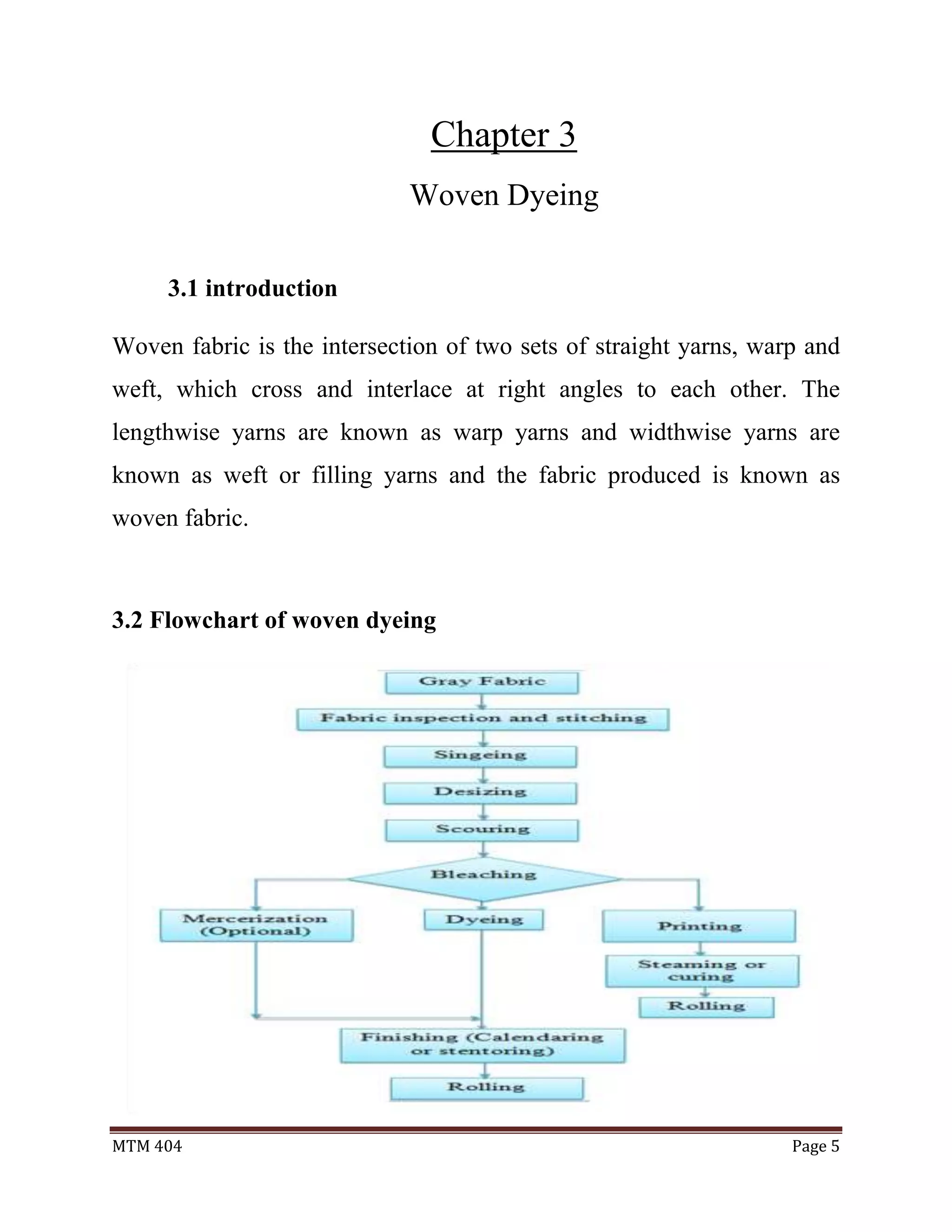
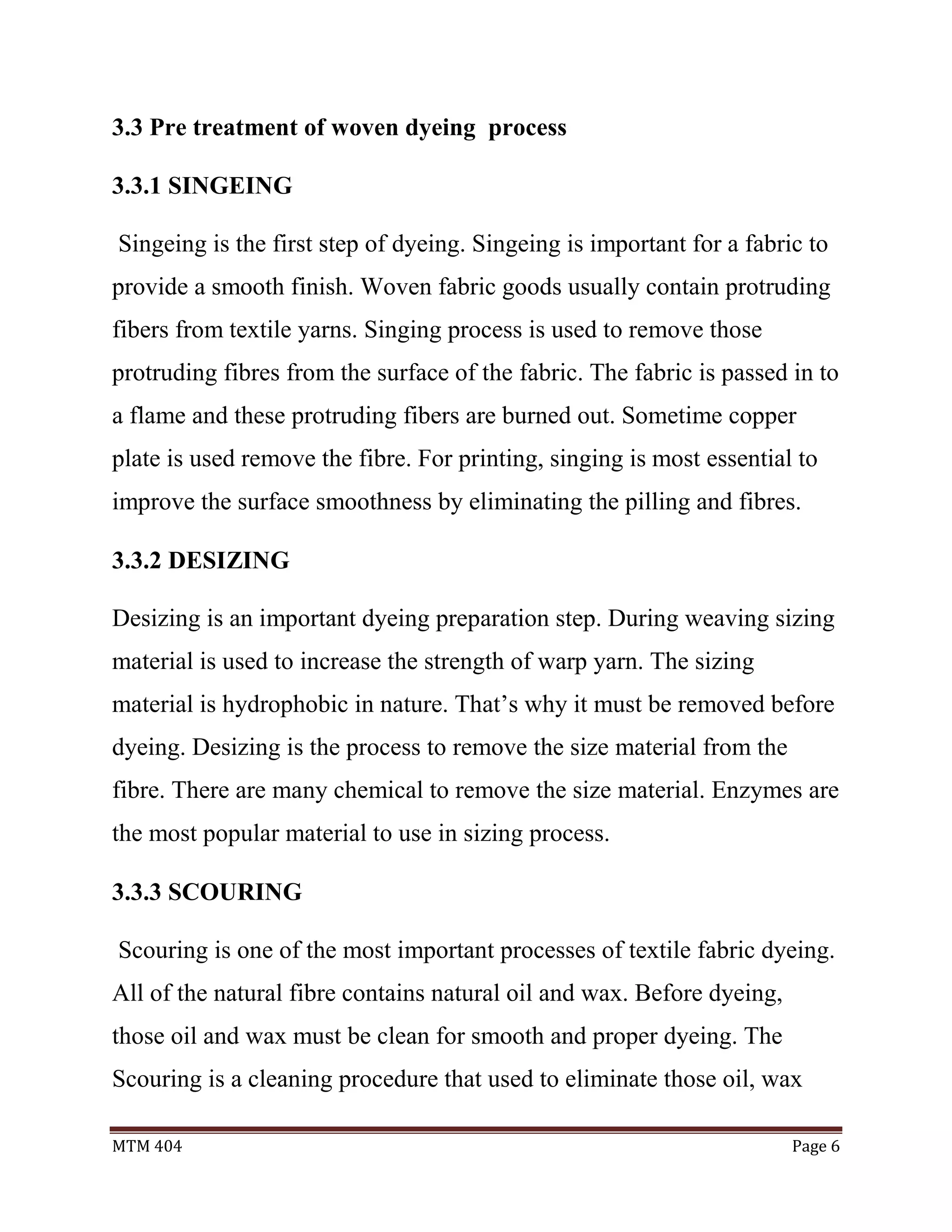

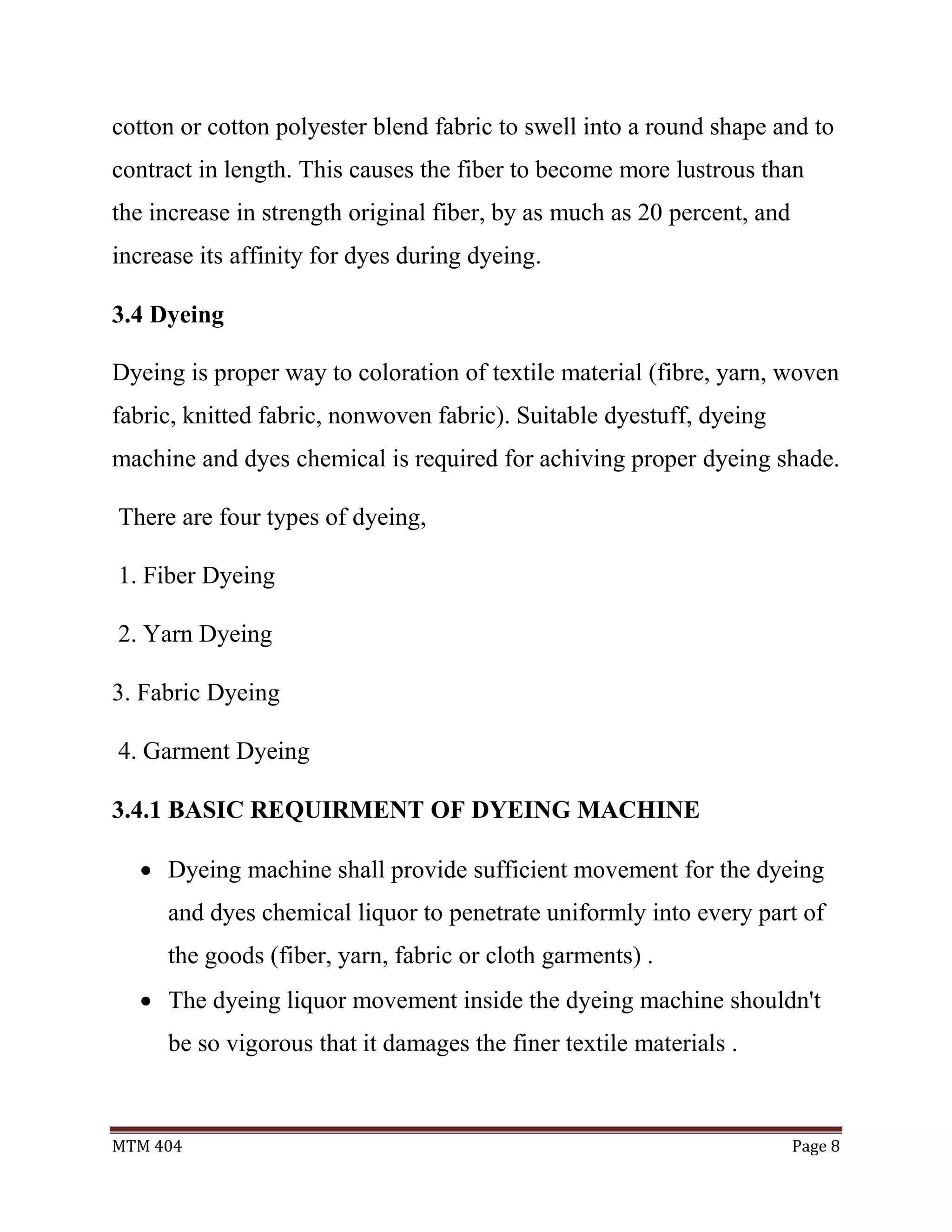
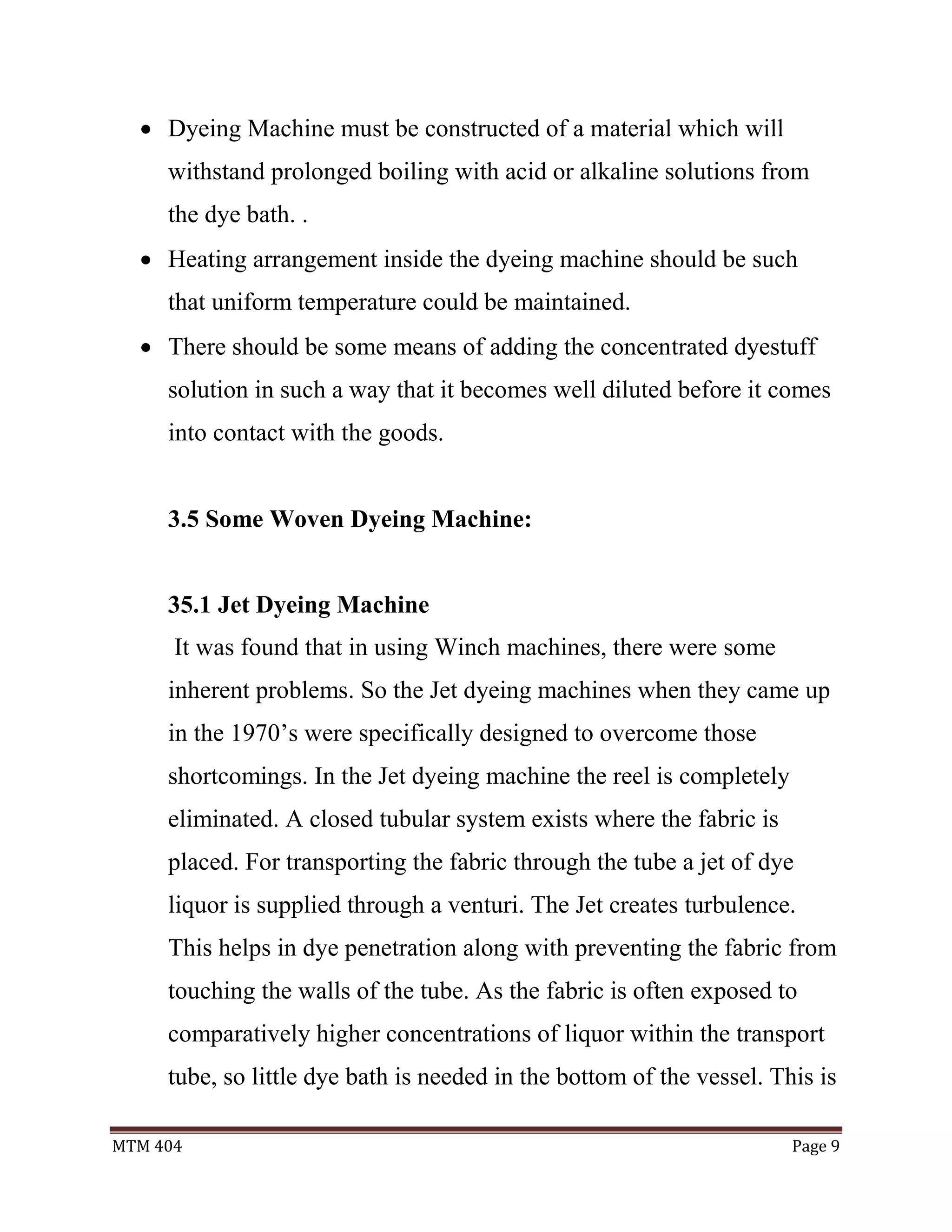

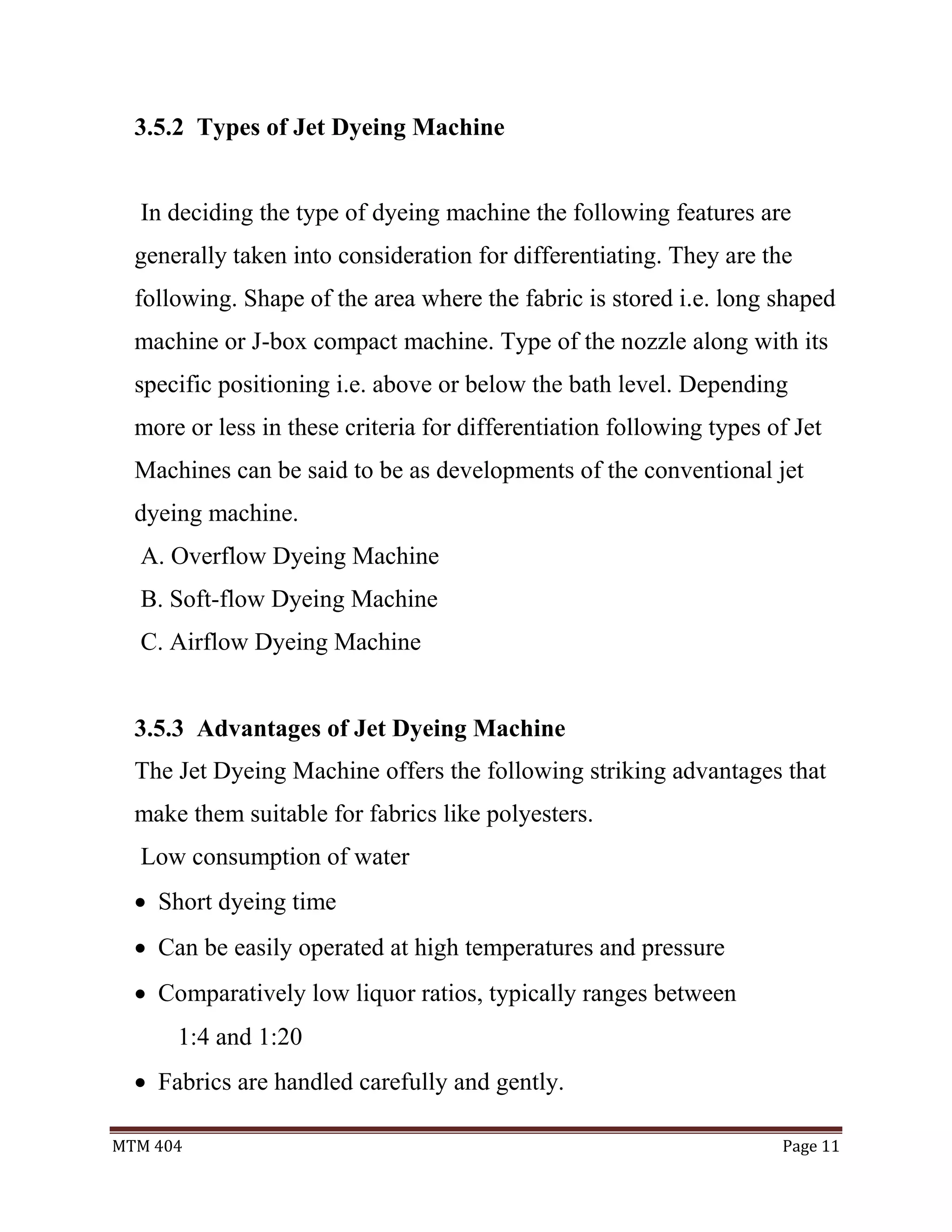
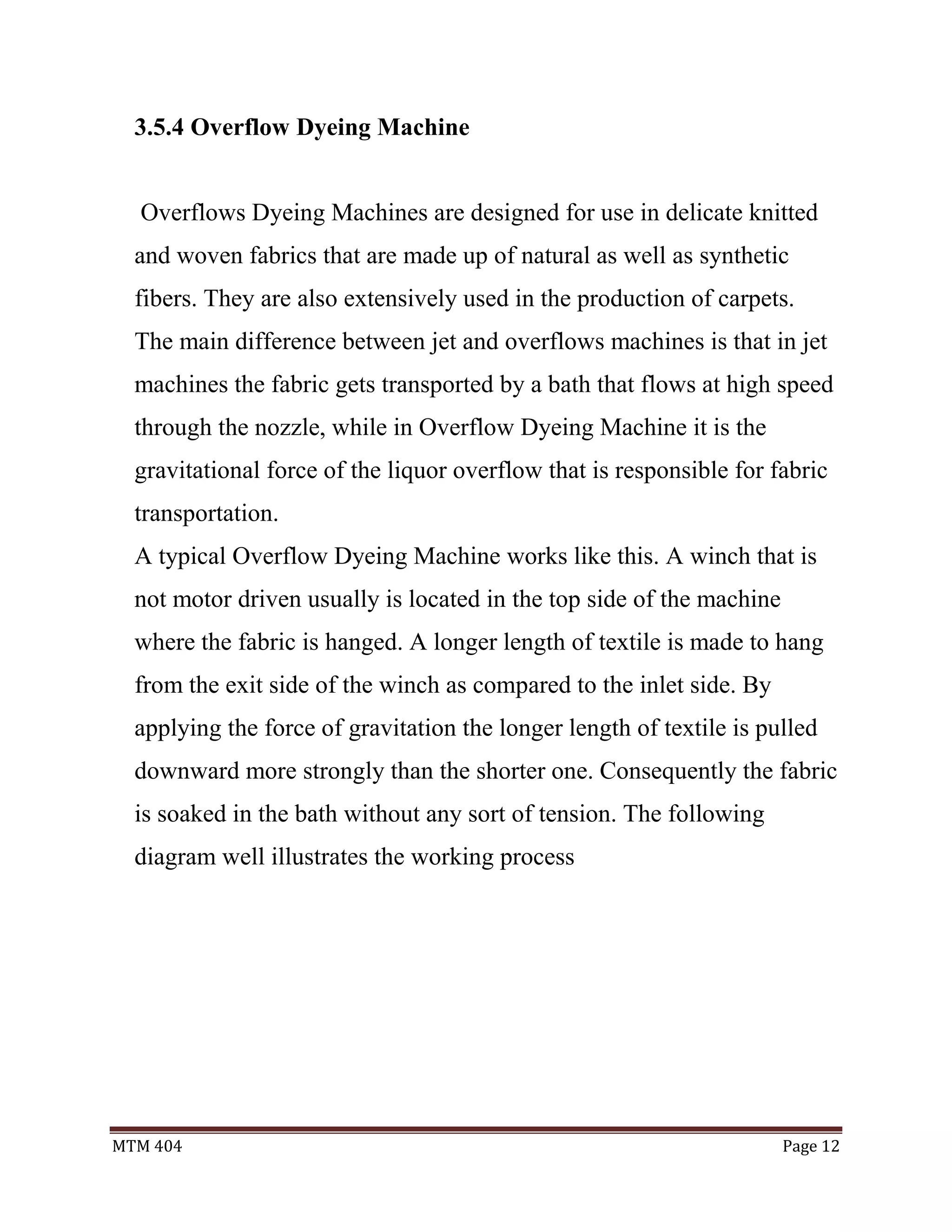
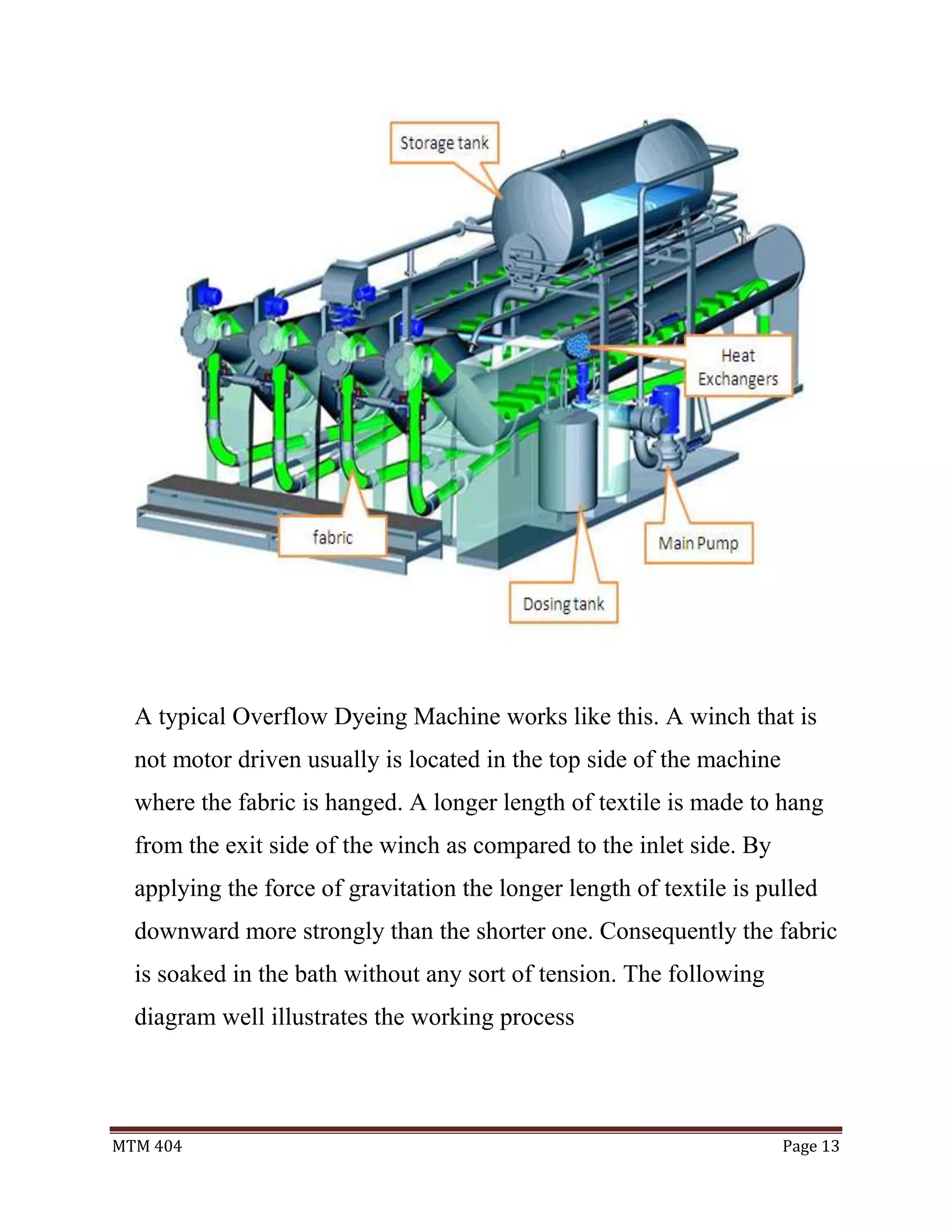
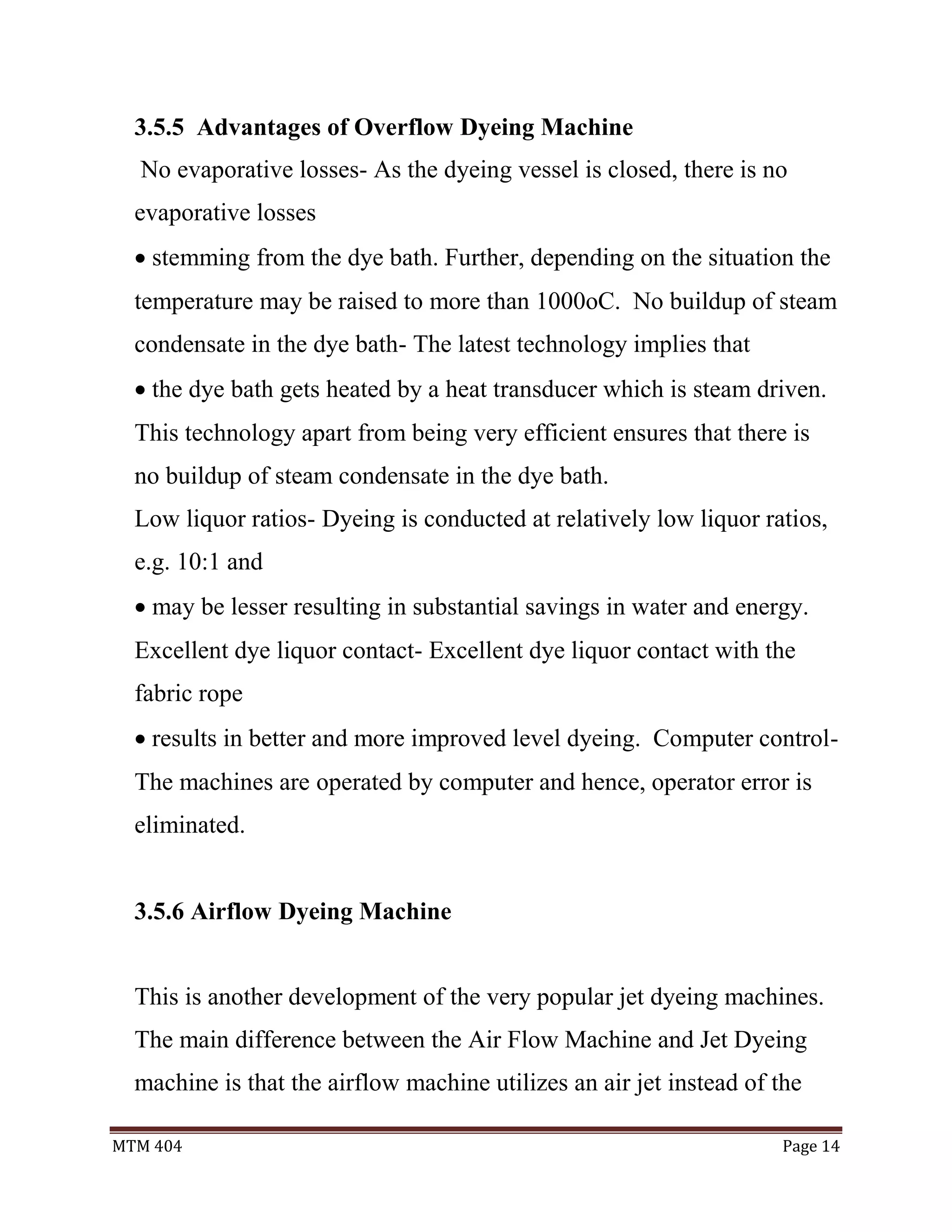
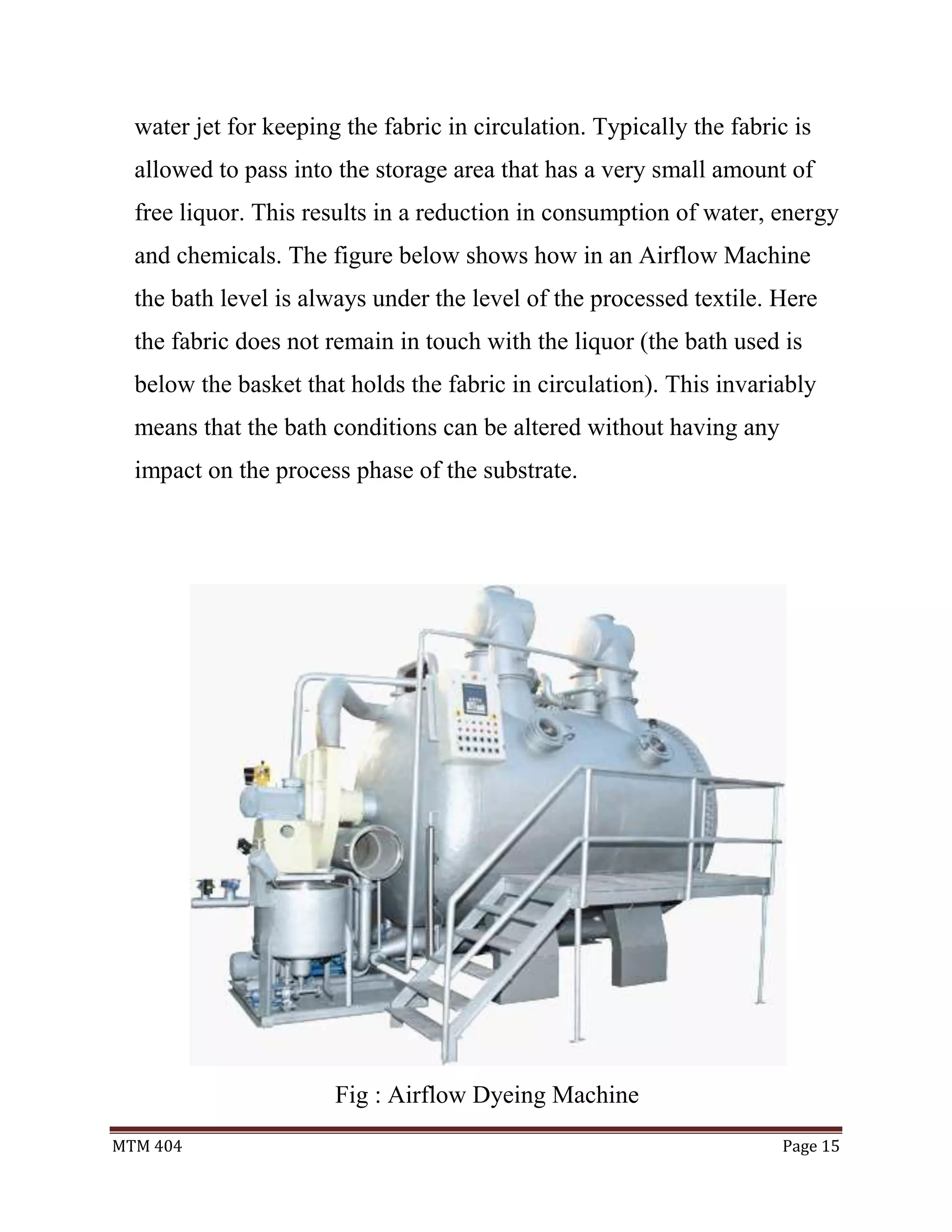
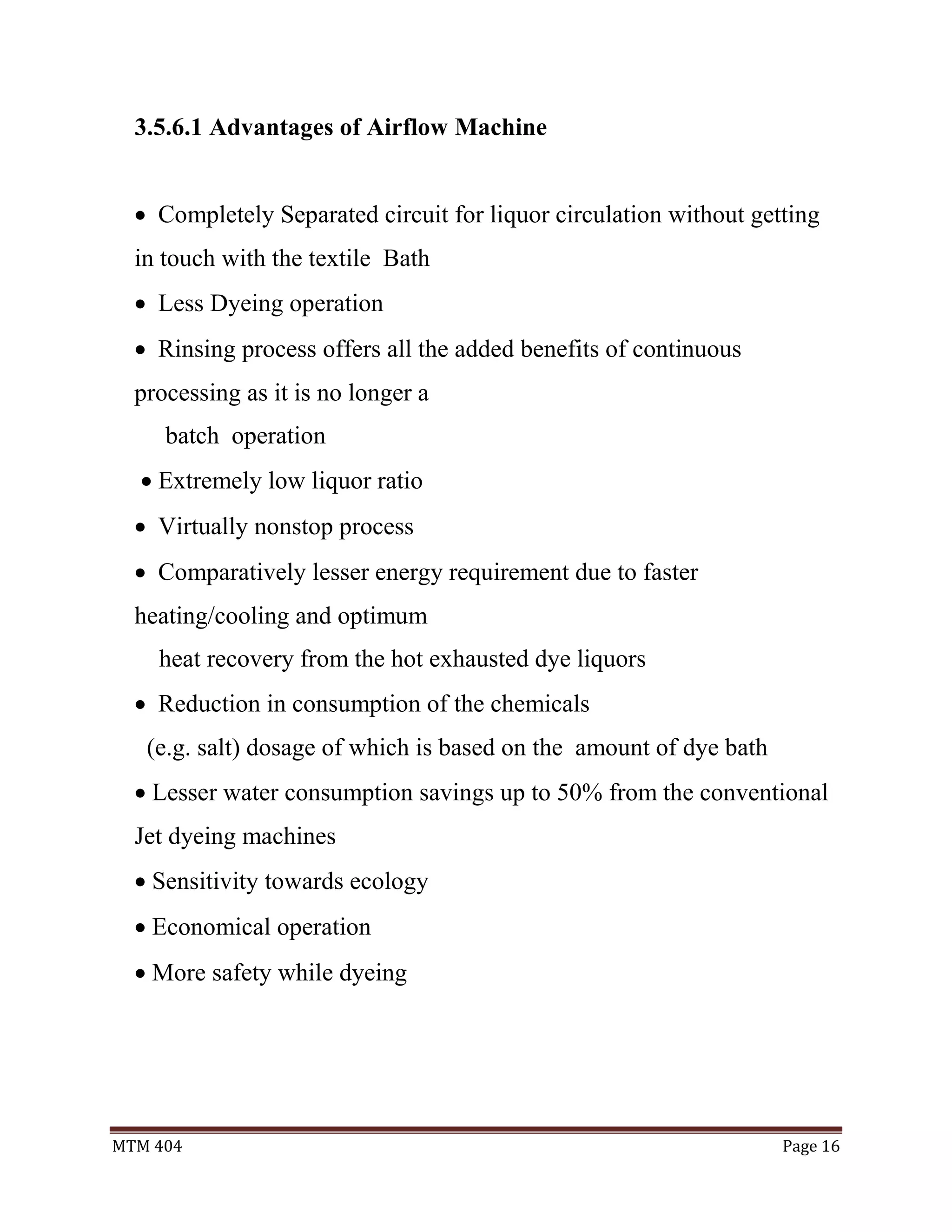

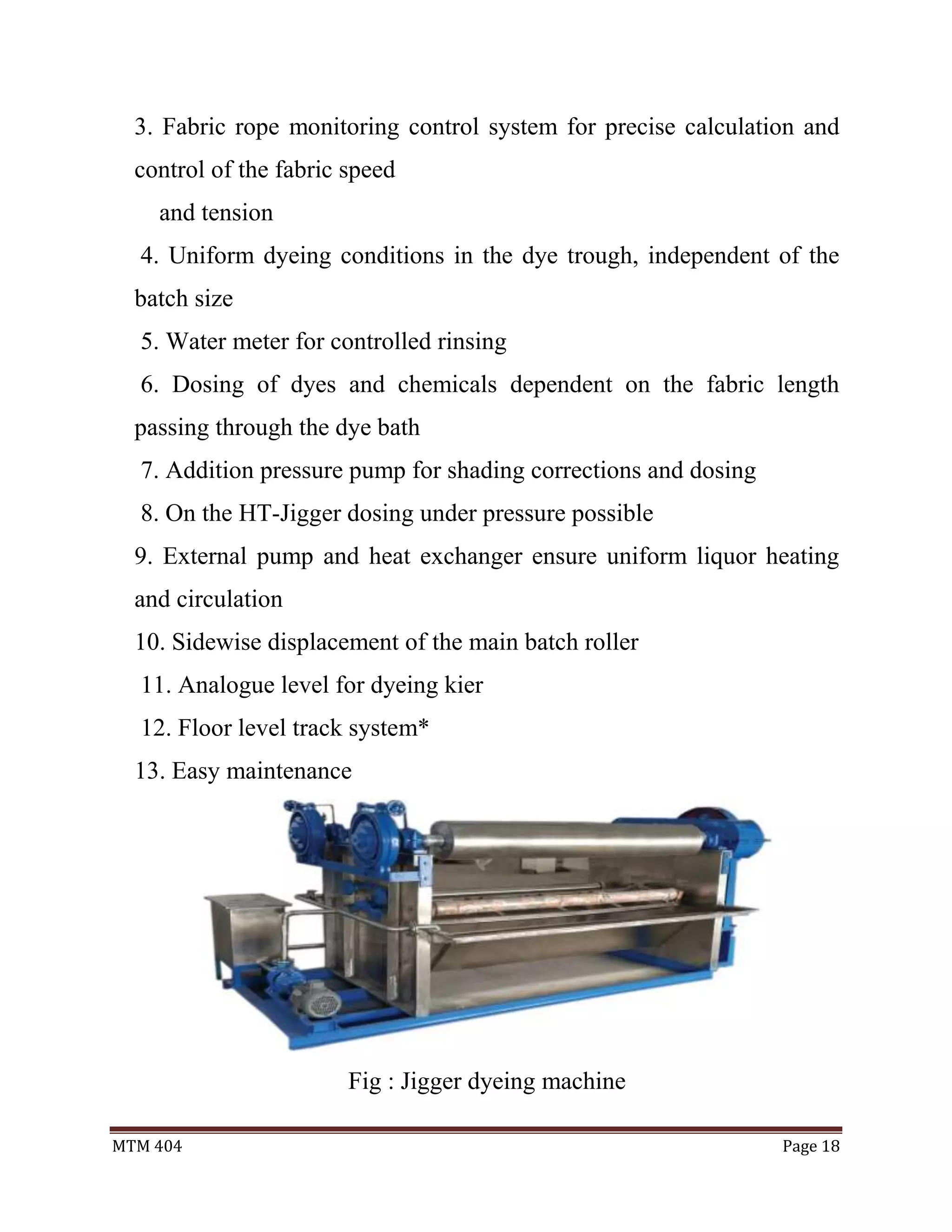
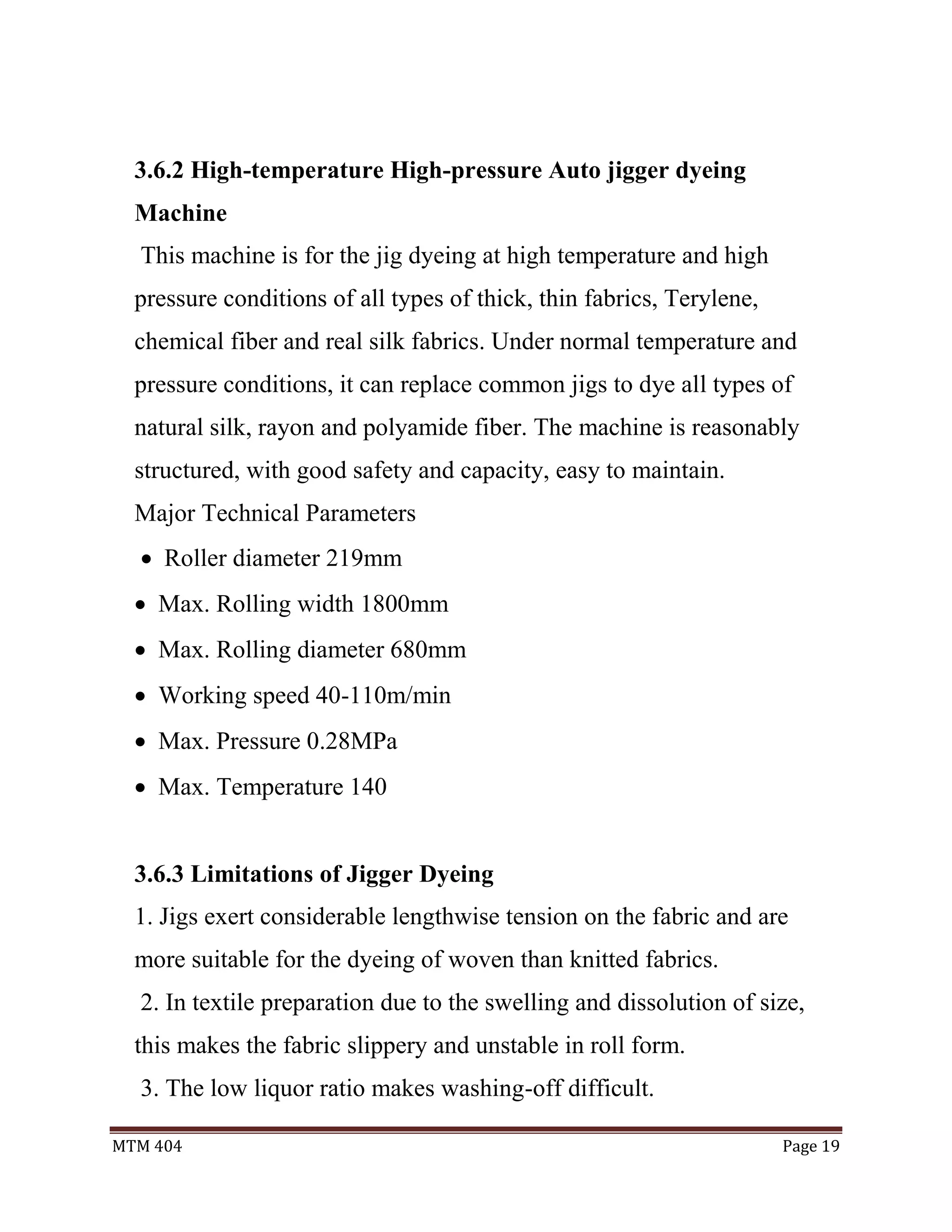
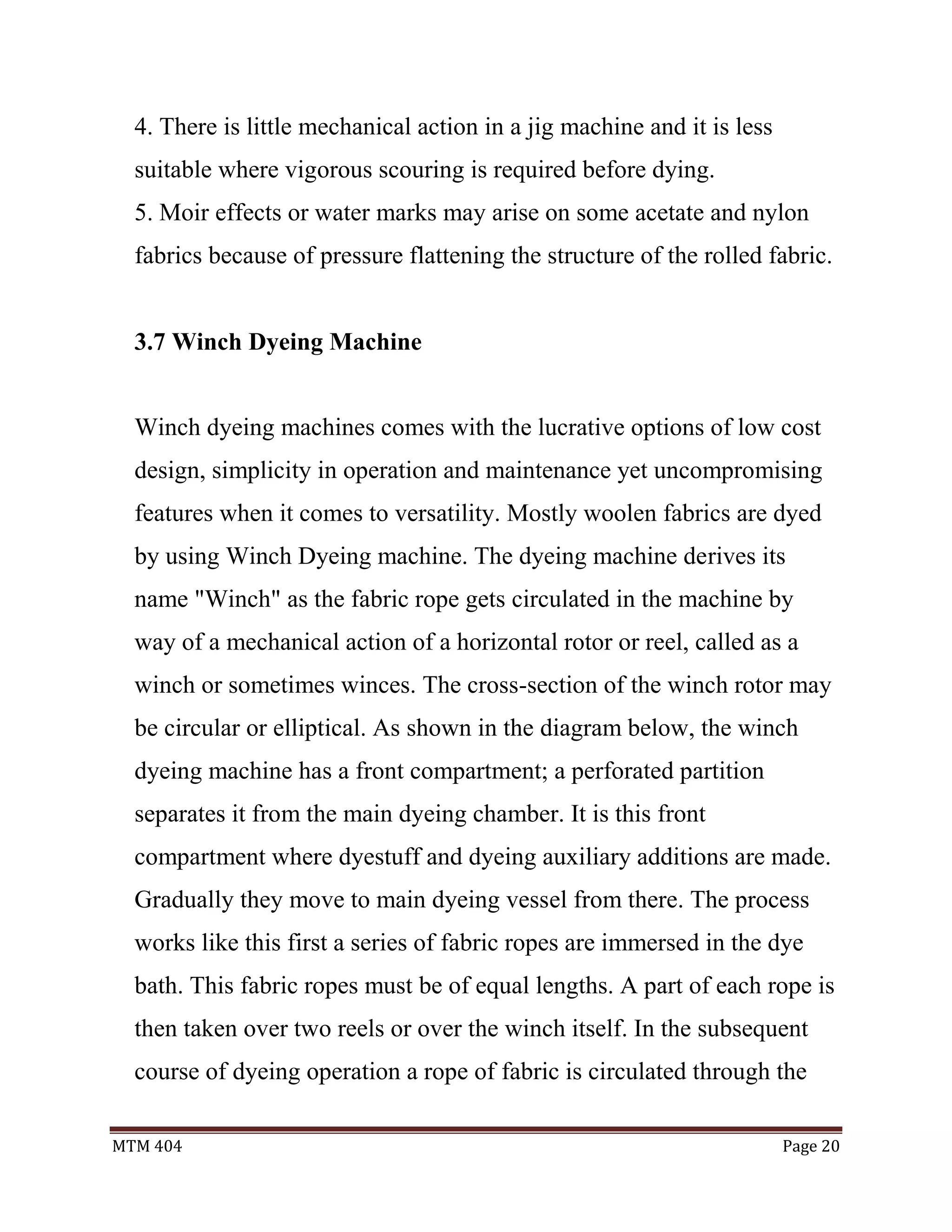

![MTM 404 Page 22
The work characteristic which excels: The mechanical structure is
simplicity the excellent work and irrigation to be easy and the
American expert the work is possible.
Width wide application : Reel [li] and other it will come, Oh, the
wool, the cotton and the pulley Oh America [tu], the acryl, the viscose
and the pulley nose the product back which sprouts dyeing, bleaching
and washing the product which is various are possible with the bell.
Performance Mechanism: Wide and soft nozzle. The special designed
wide soft flow nozzle system with high liquor flow to achieve the soft
and smooth process.
Air ballooning system (Option): Air ballooning device which are to
be shoot air in the tubular type knitted fabrics so that fabric can be dye
at any condition. Excellent Workability: The compact structure of
machine provides easy operation and maintenance and even the
unskilled.
Wide Application: The machine provides multi-purpose of dyeing and
bleaching and washing for terry towel, velour, wool, cotton,
polyamide, acrylic and viscose and poly/cotton brand and so on.
Technical Characteristics:
Capacity (kg): 400 ~ 450
Electric power: 18kw
Max temp: 98 °C
Number of nozzle: 4](https://image.slidesharecdn.com/textiledyeingmcfinalreportsouthasia-181114082829/75/Textile-dyeing-mc-final-report-University-of-south-asia-22-2048.jpg)
